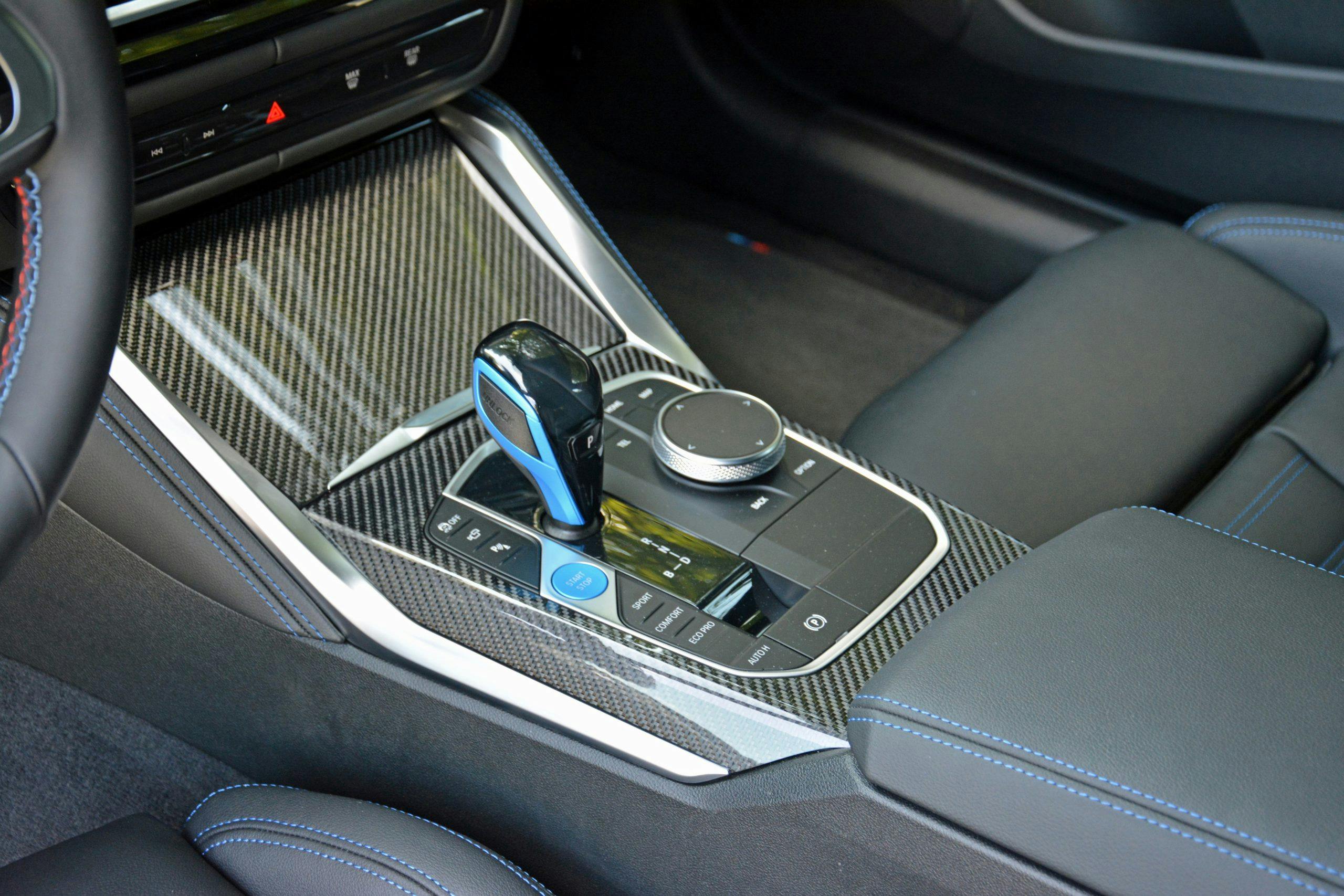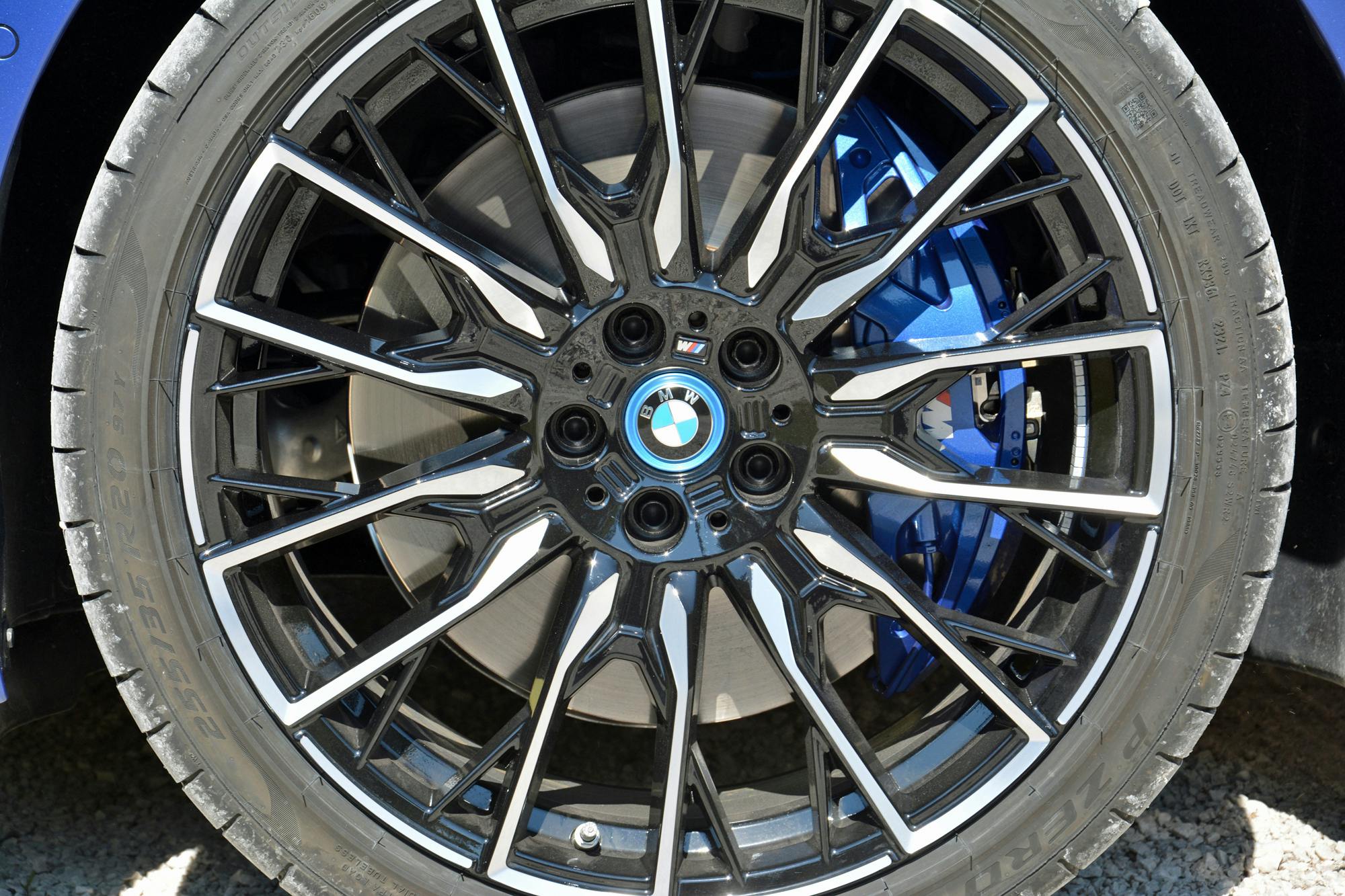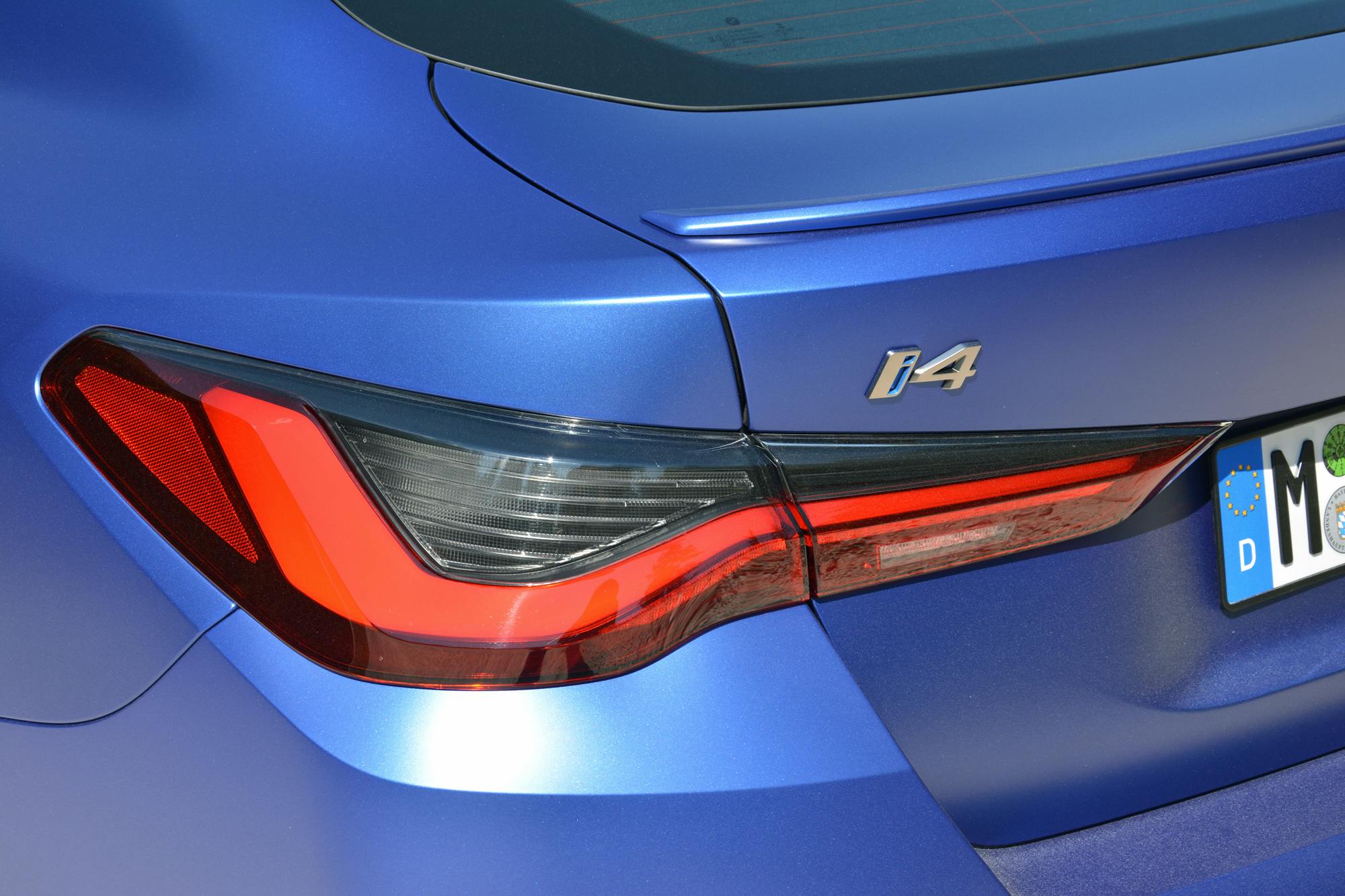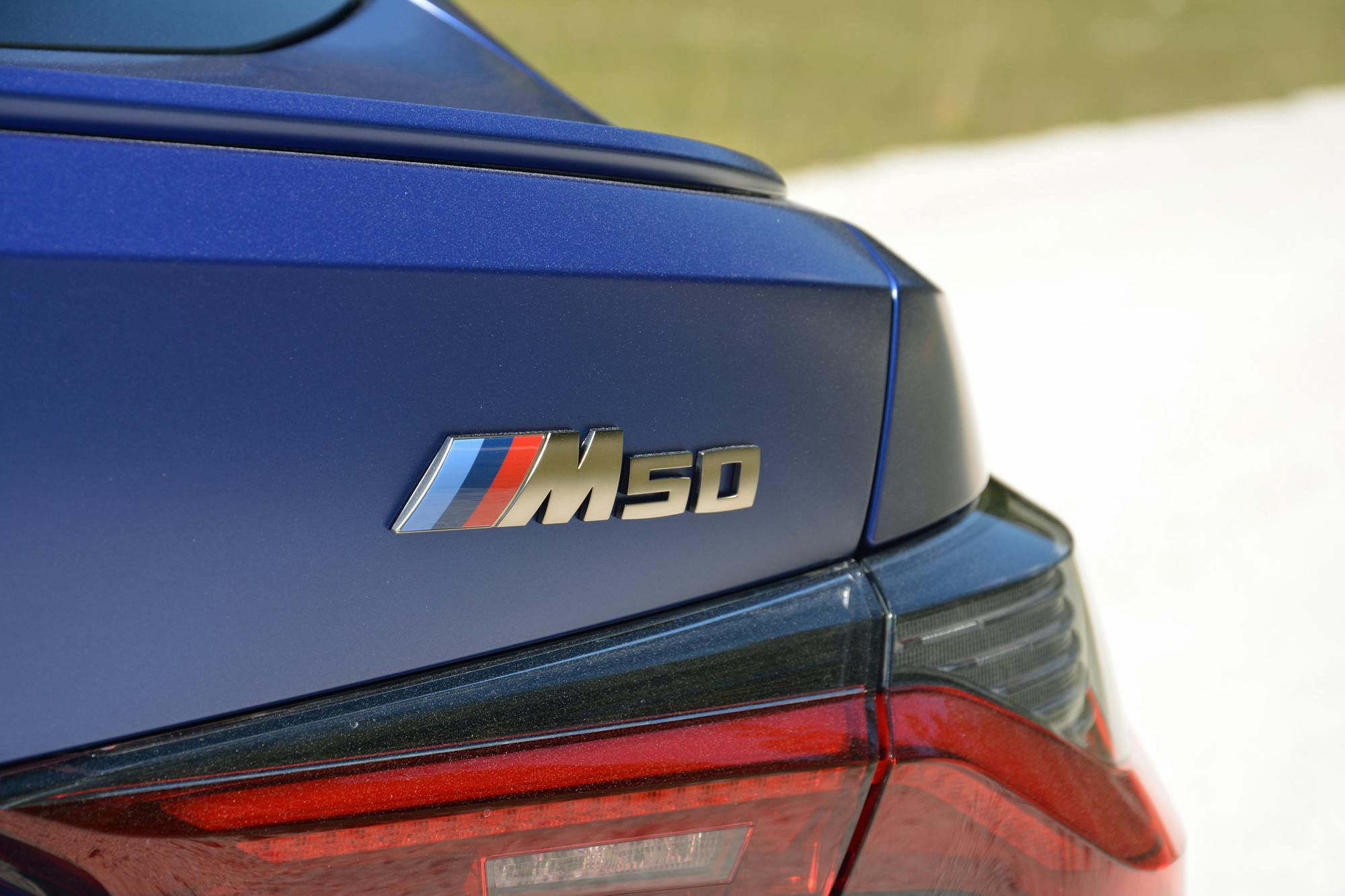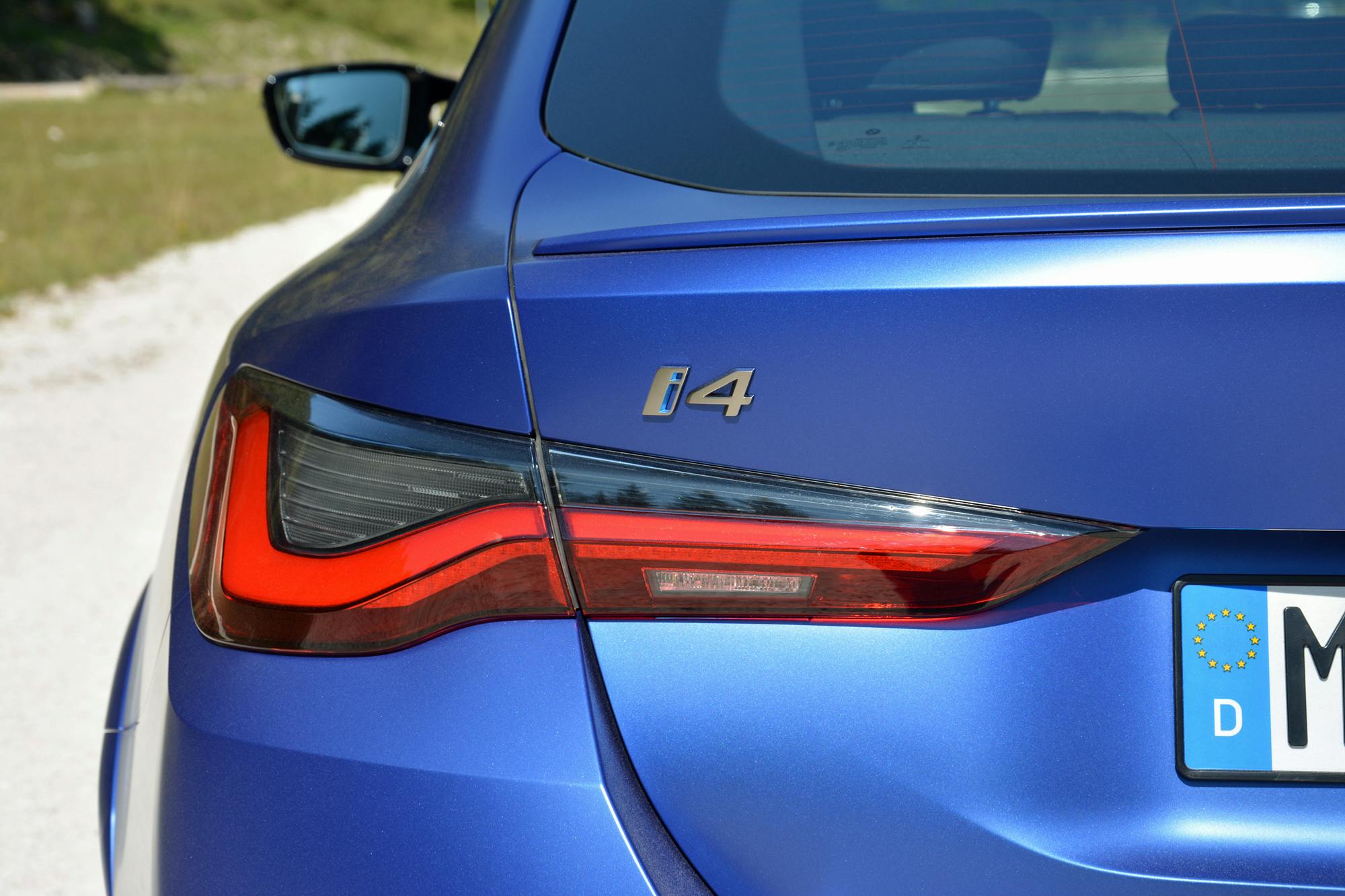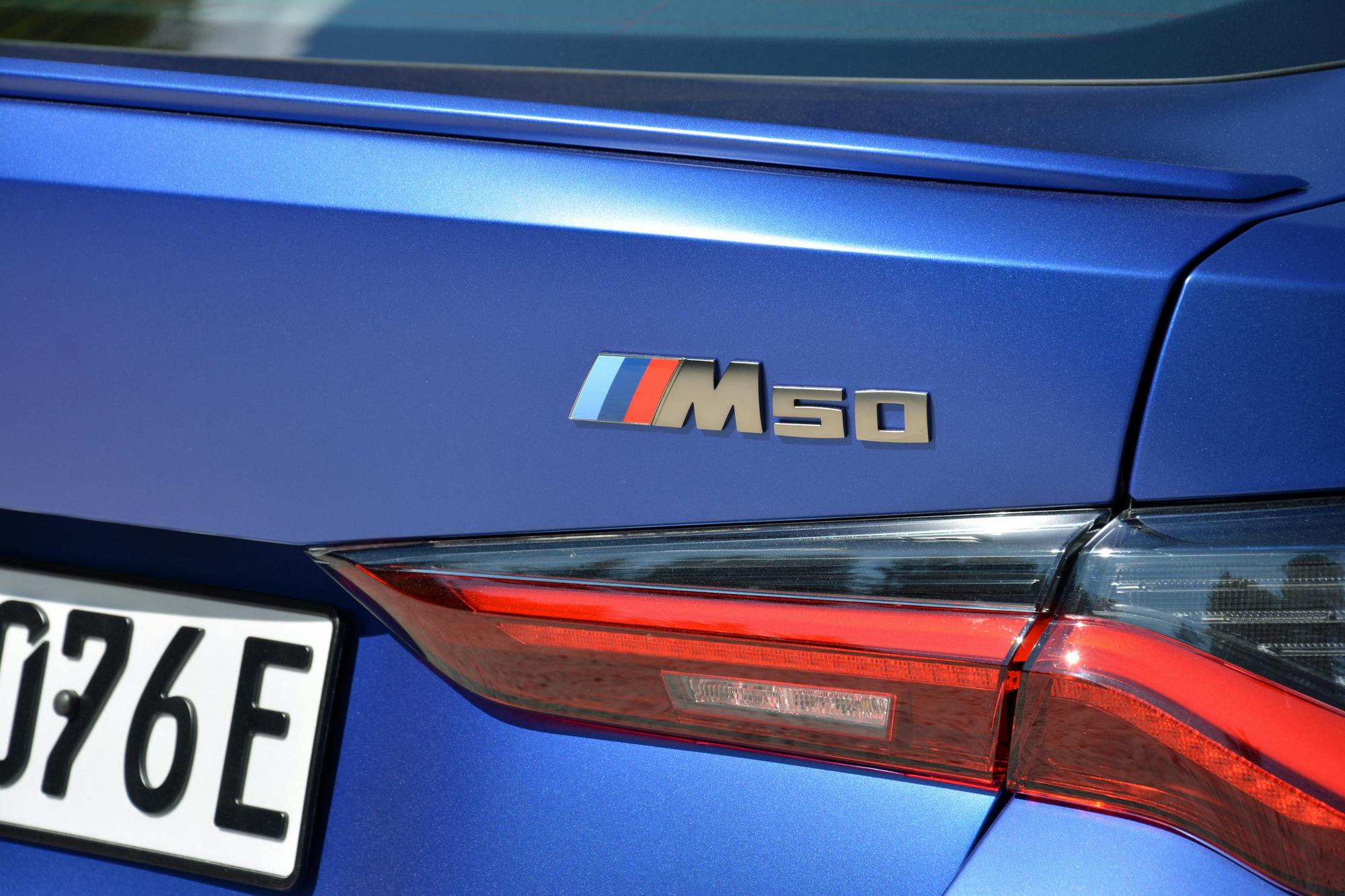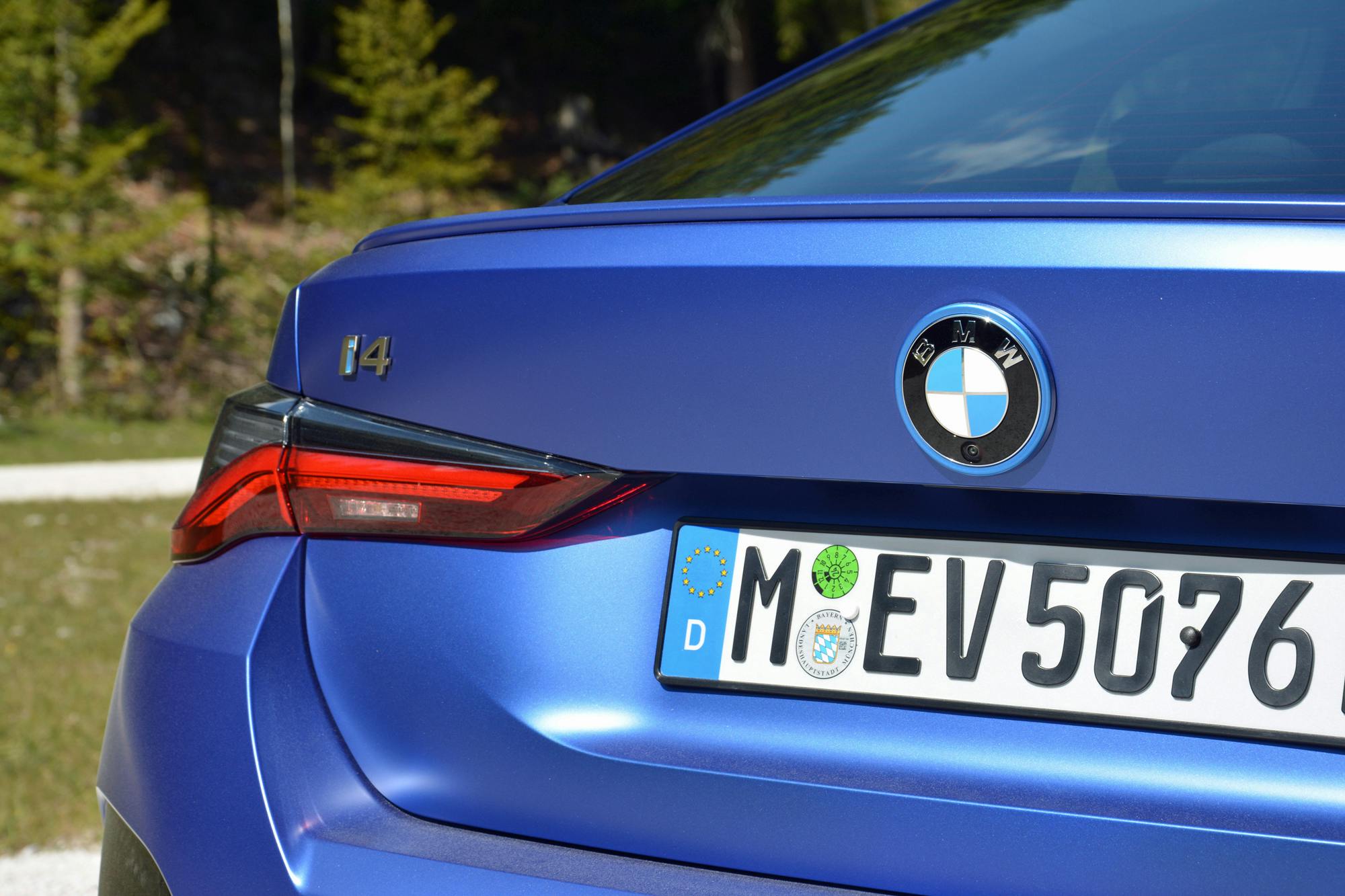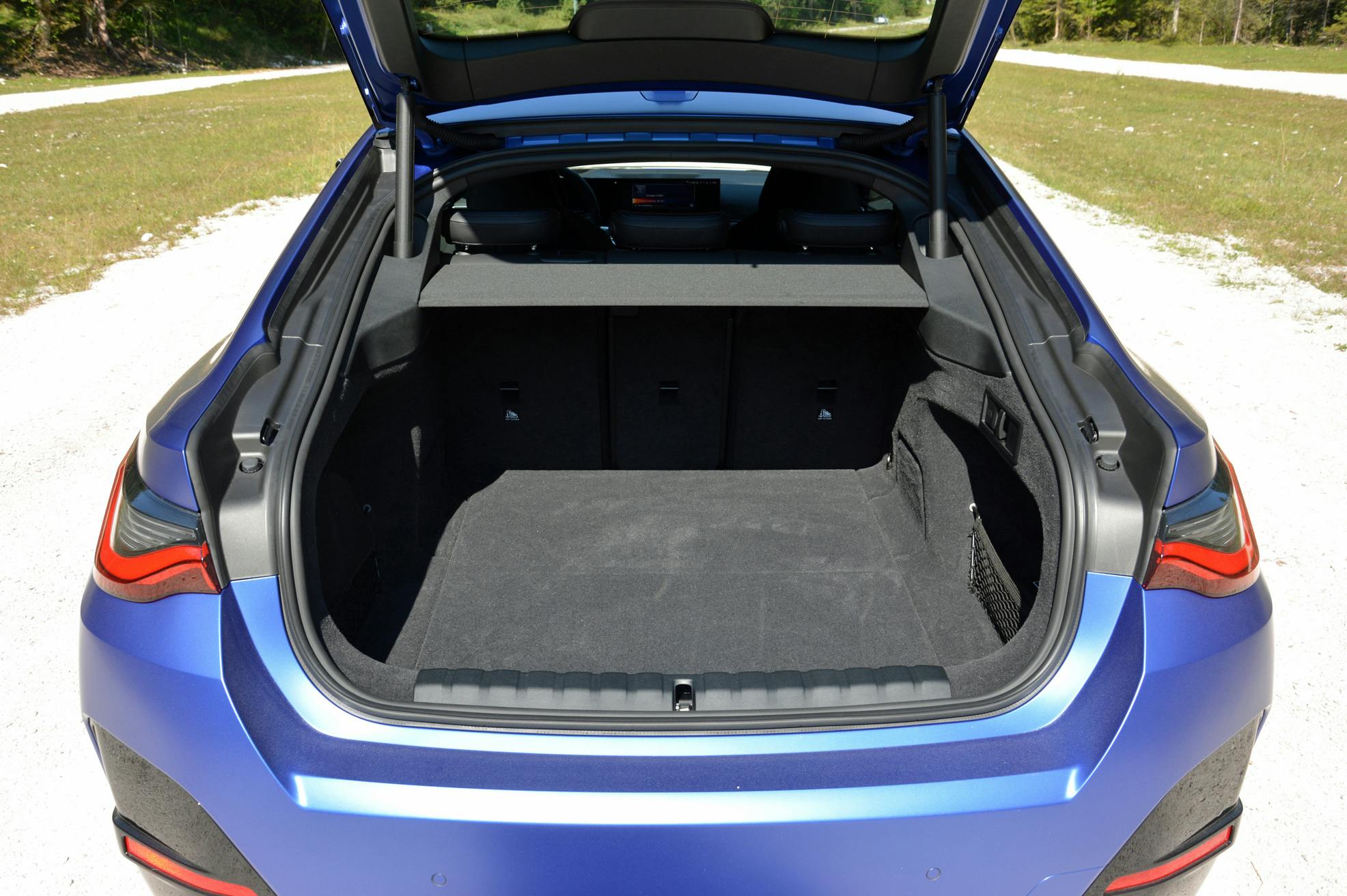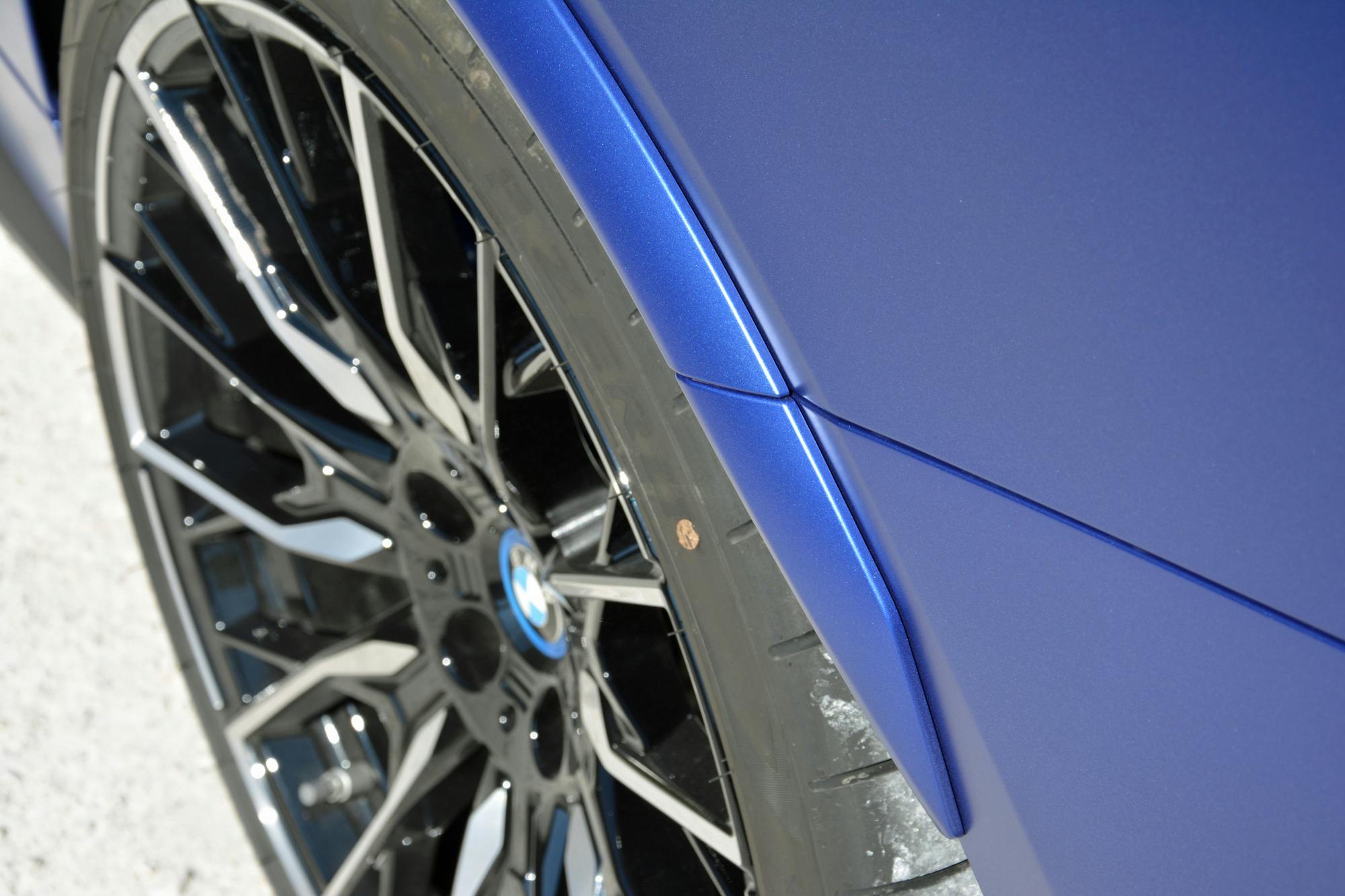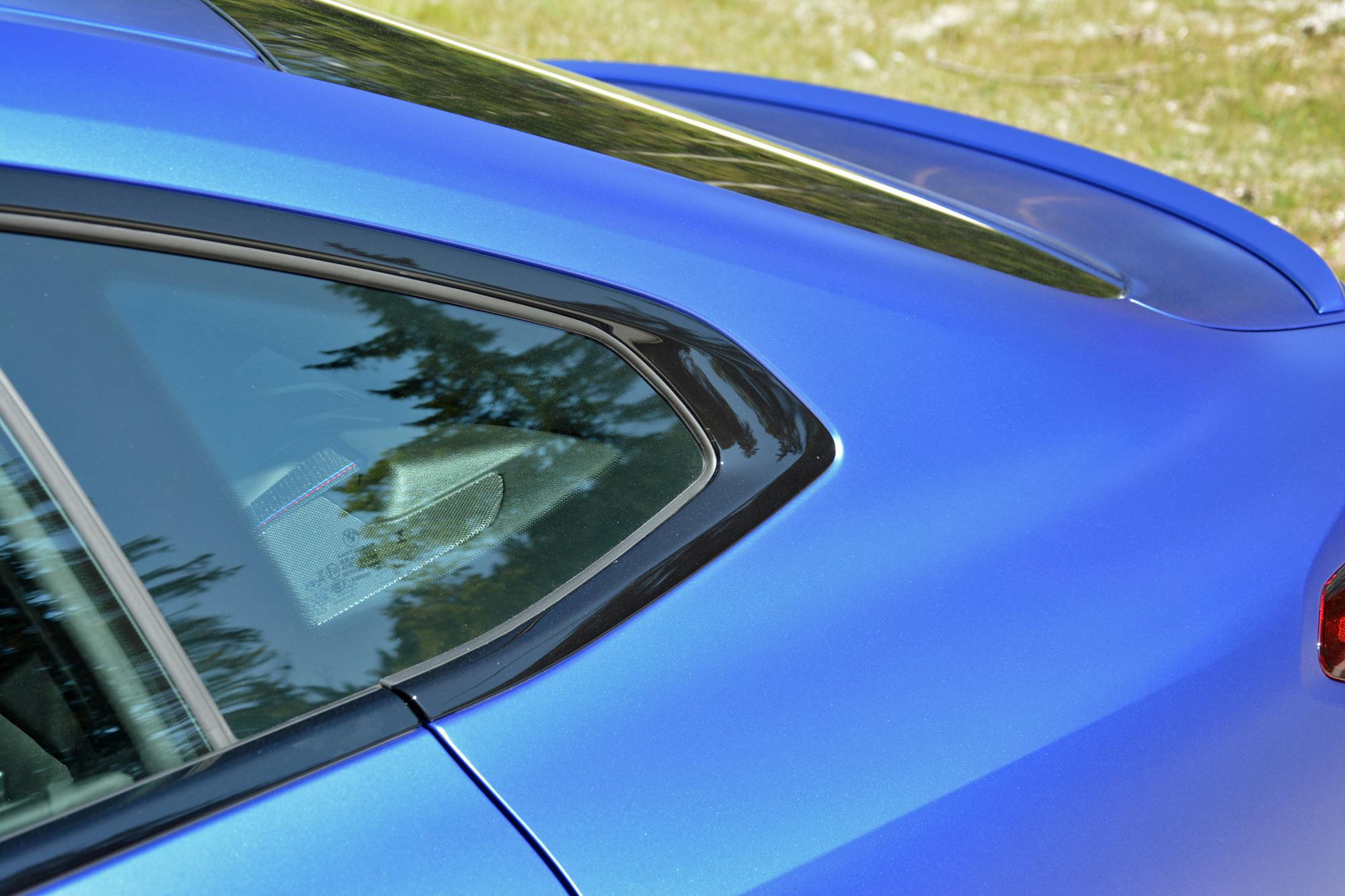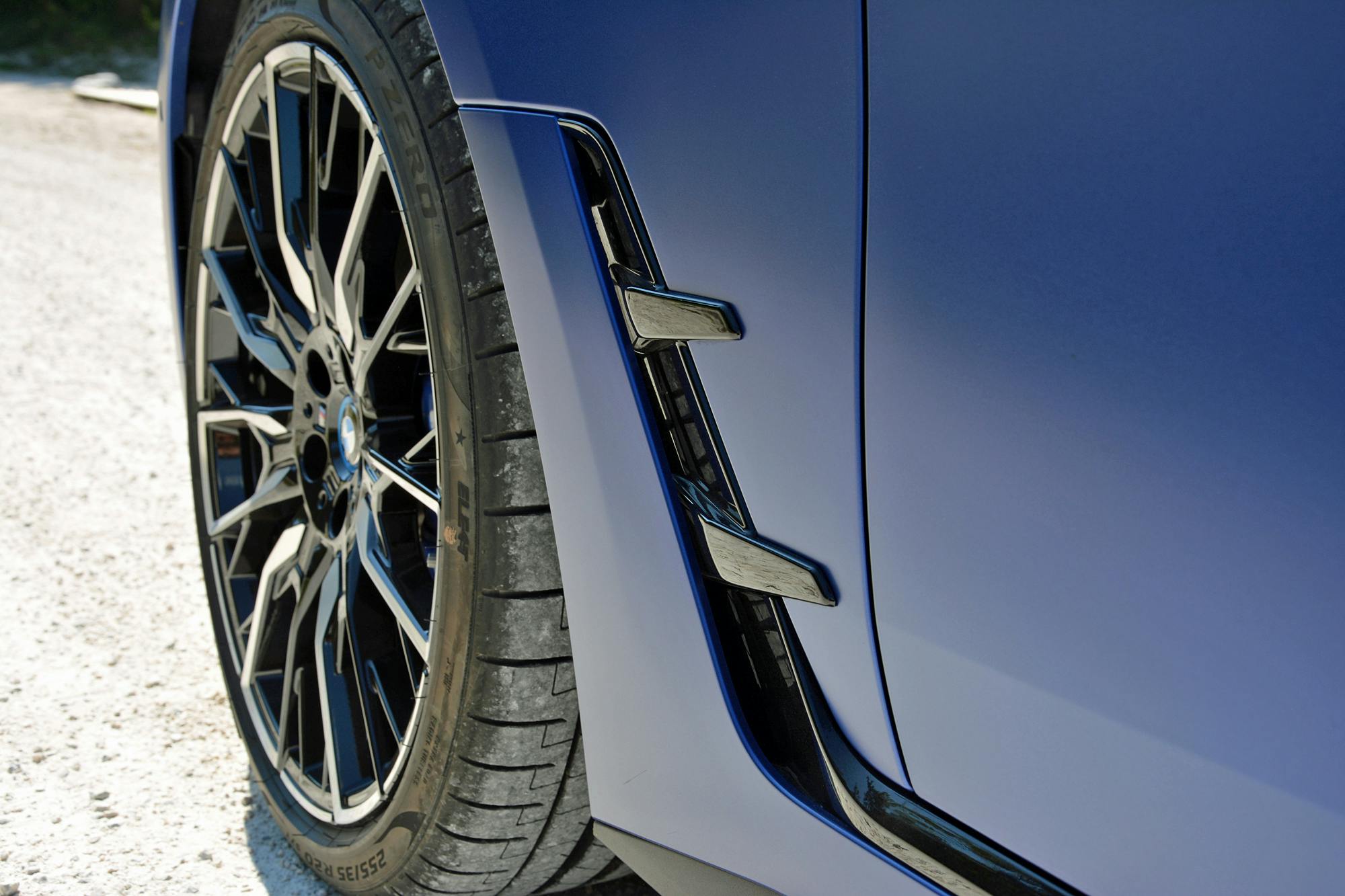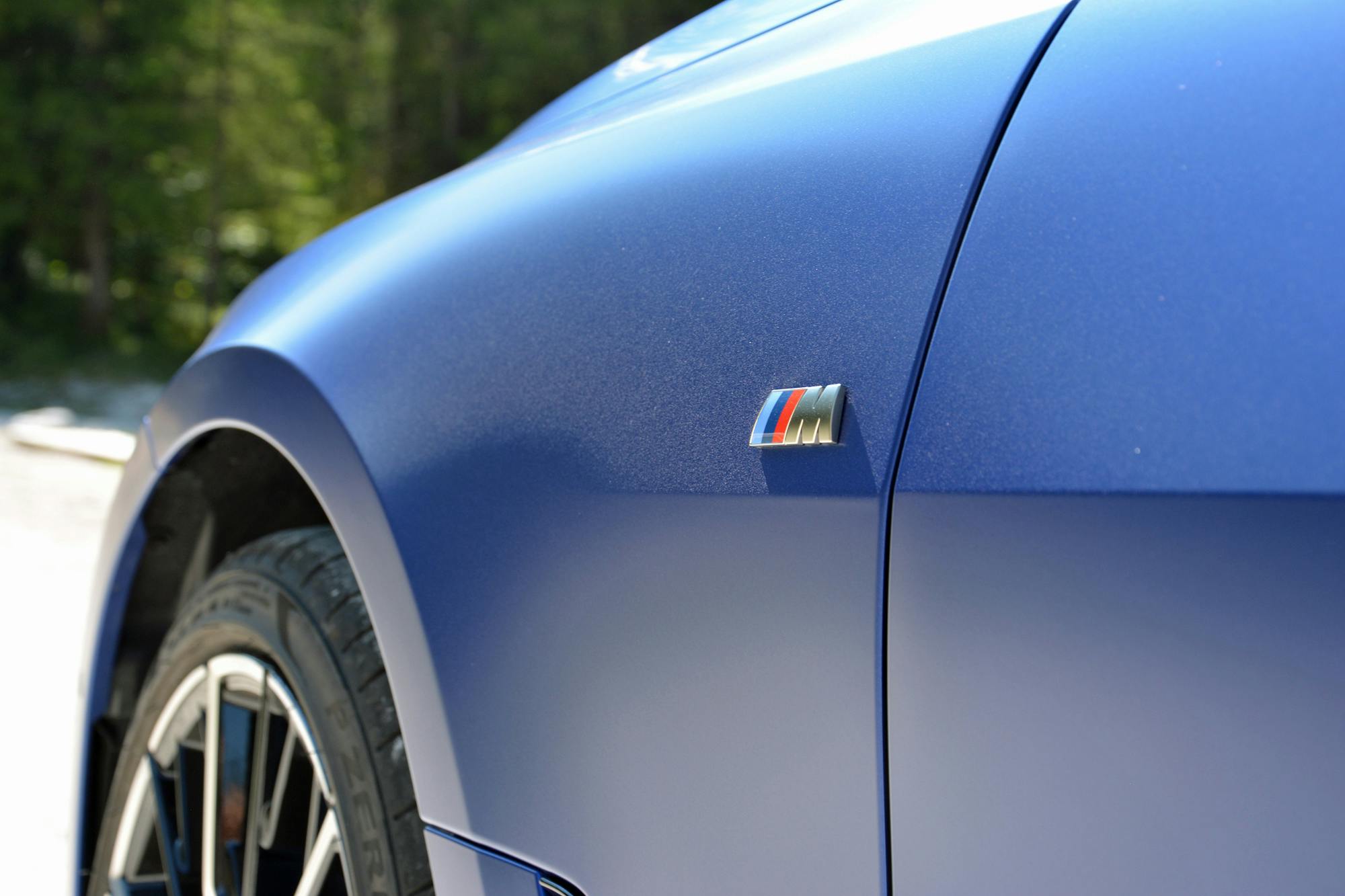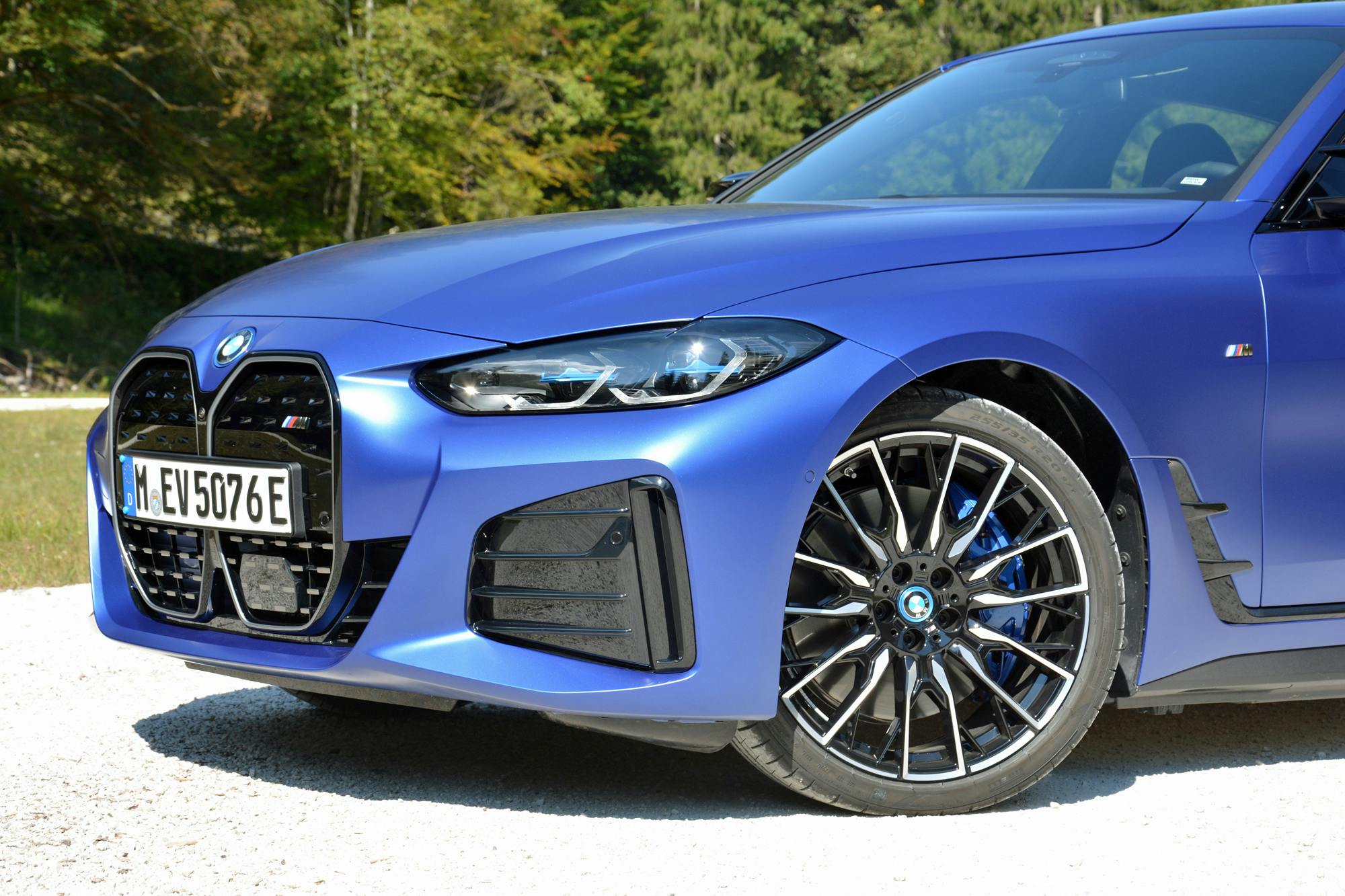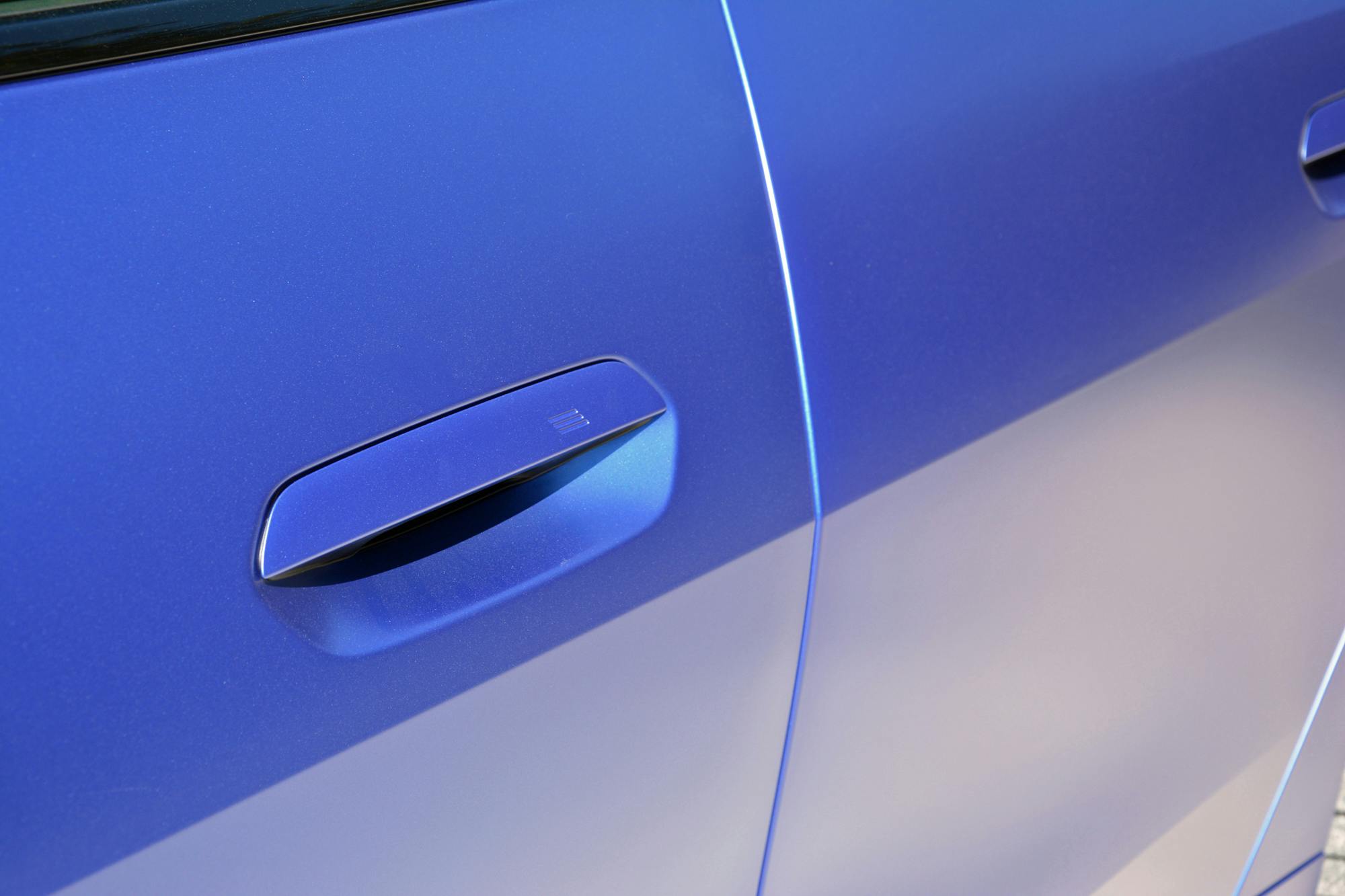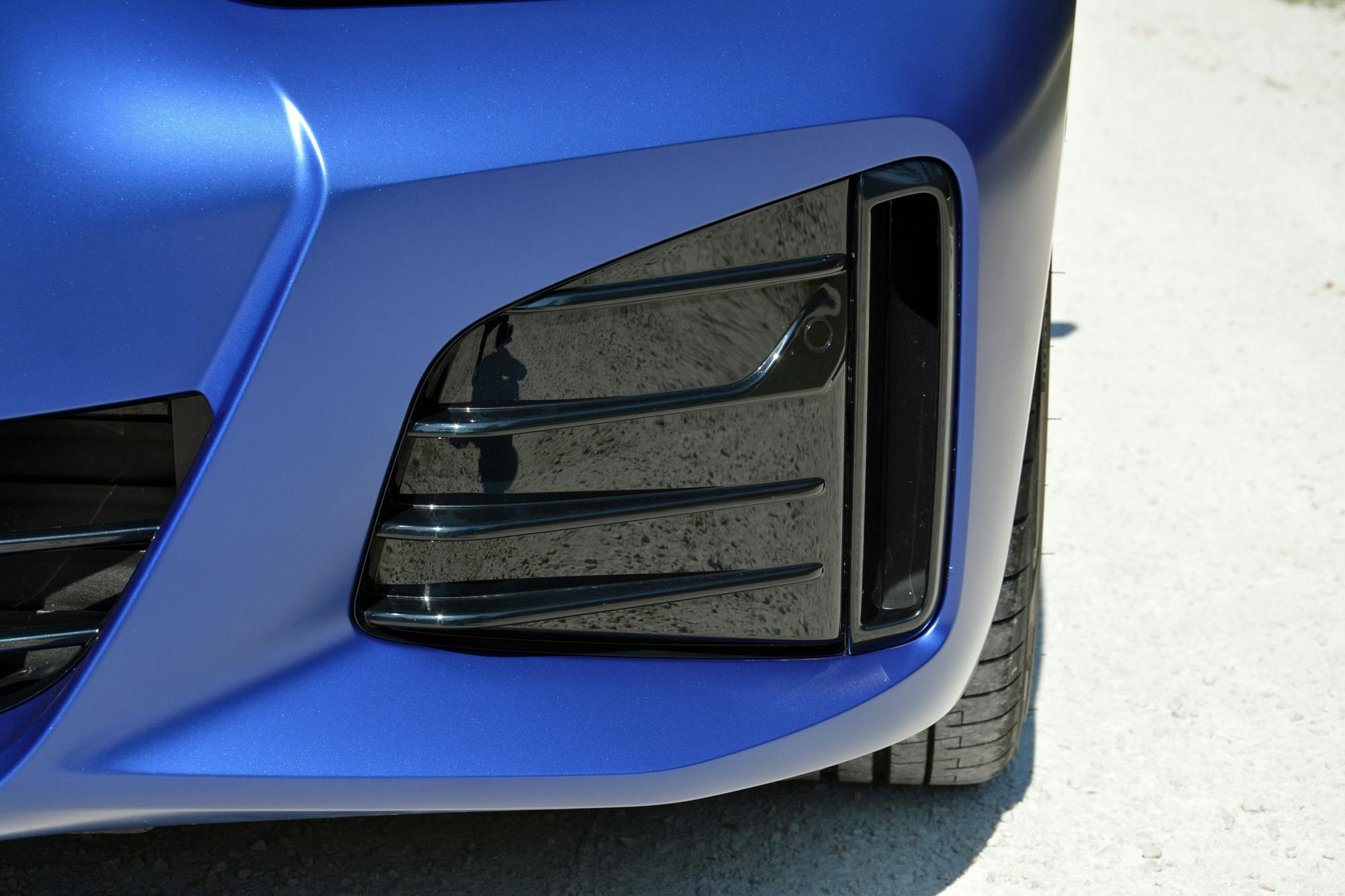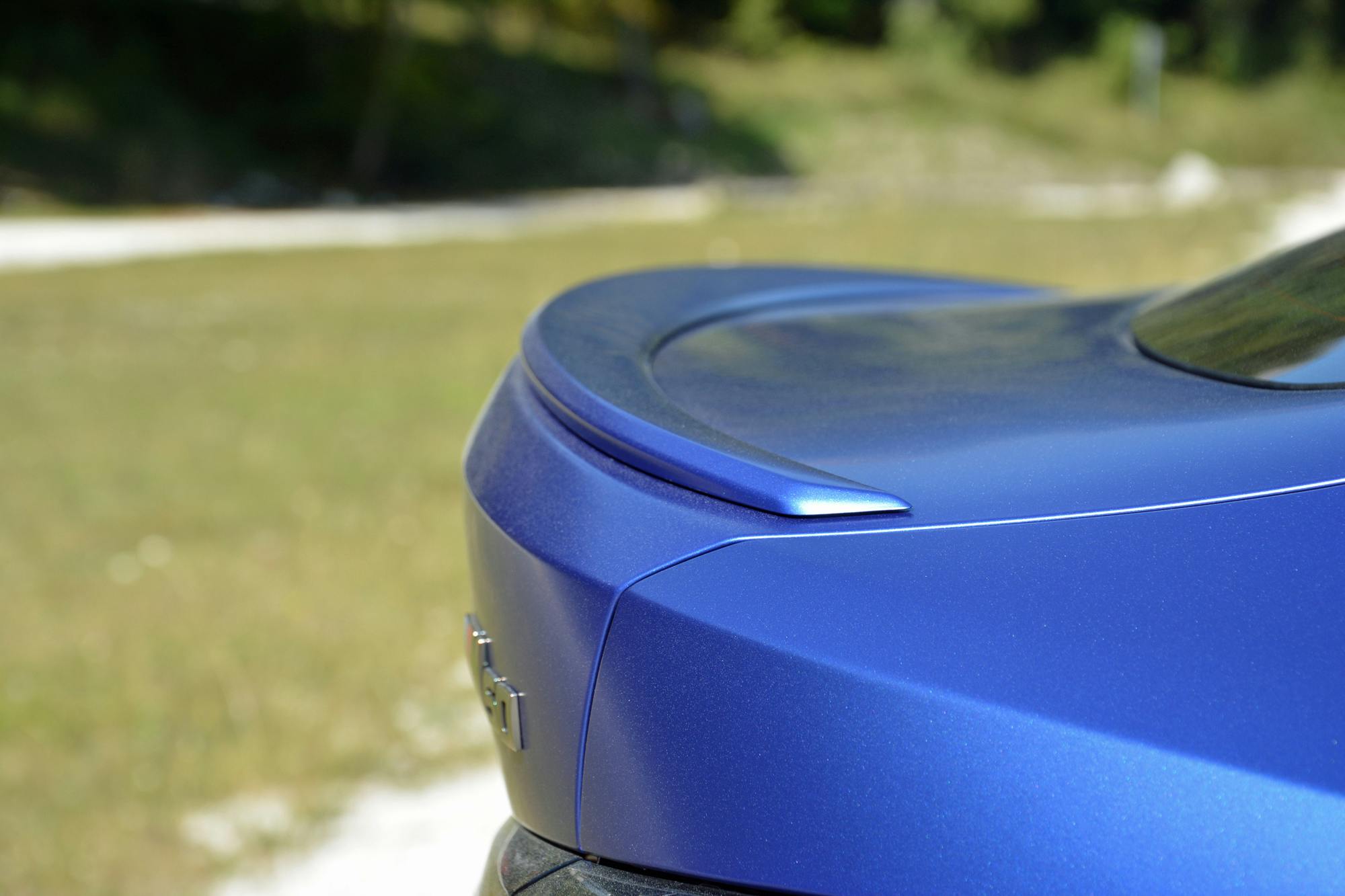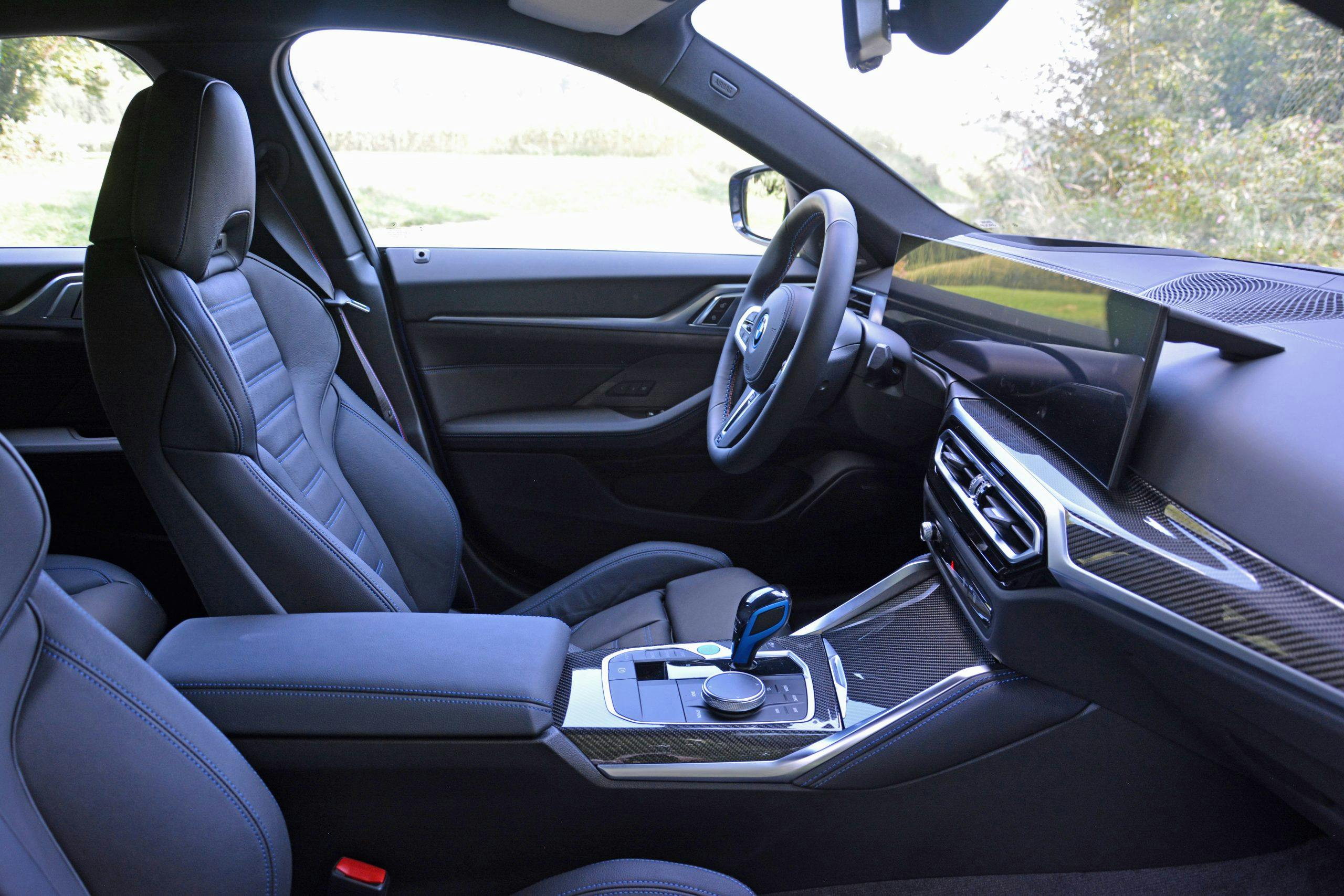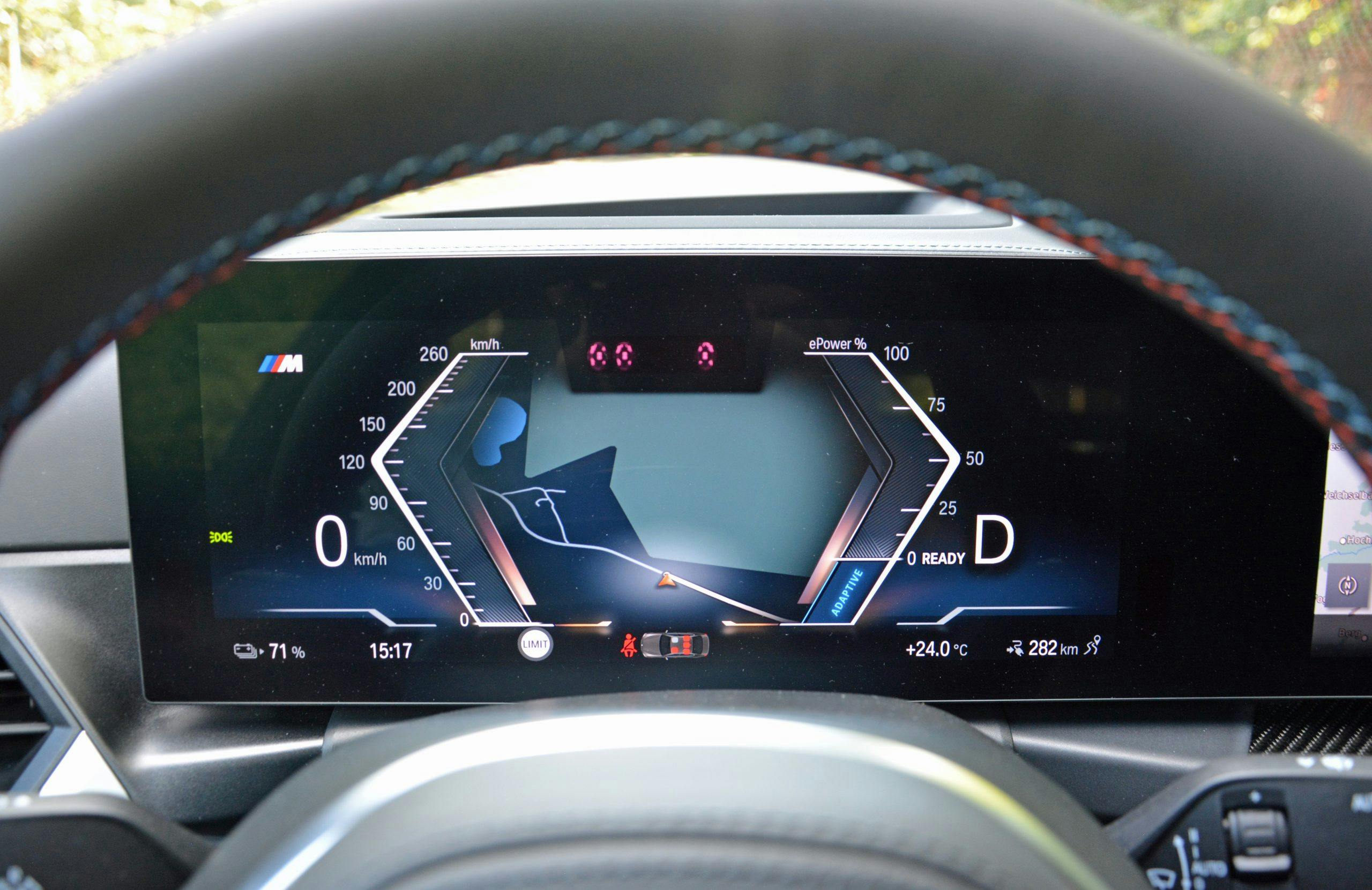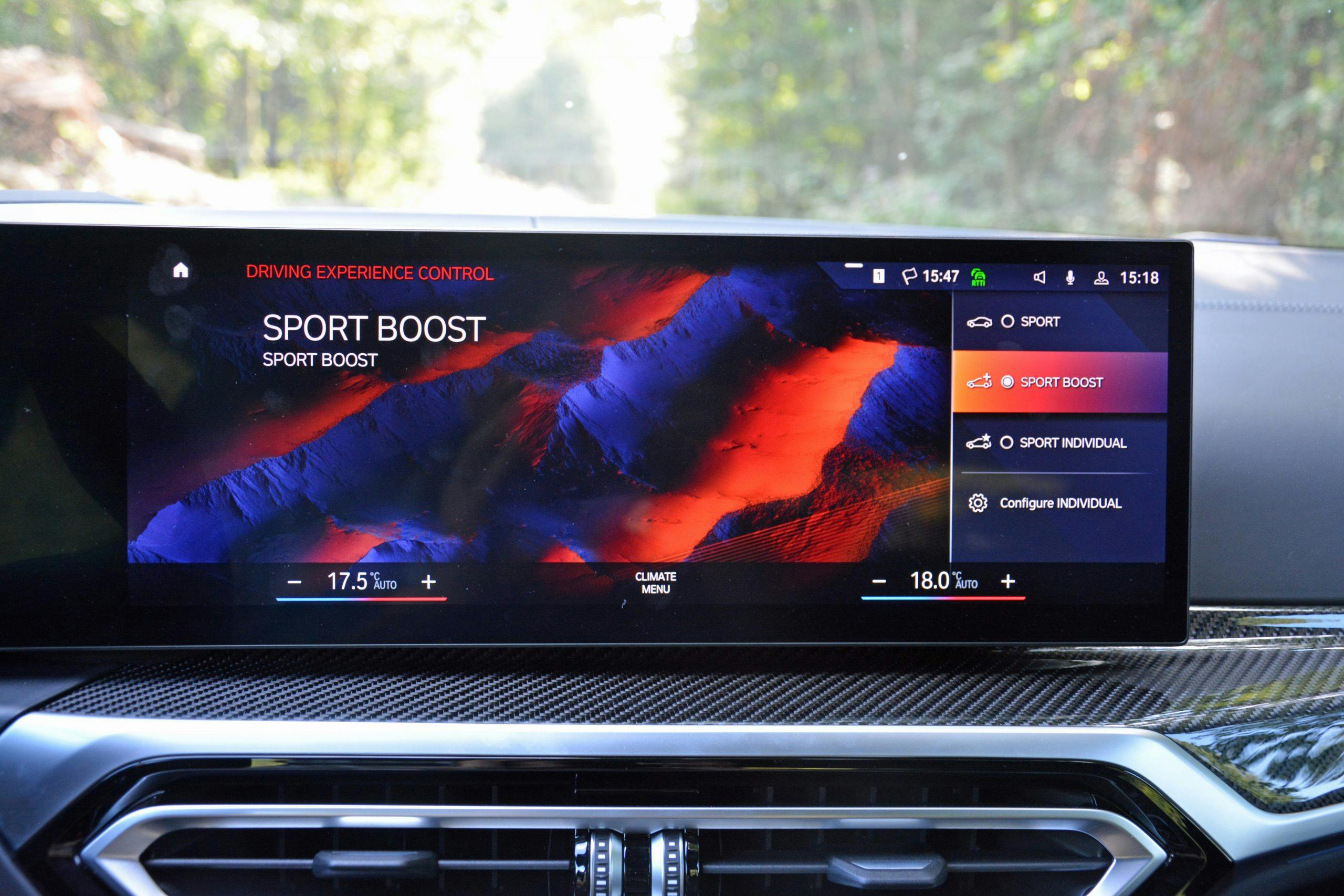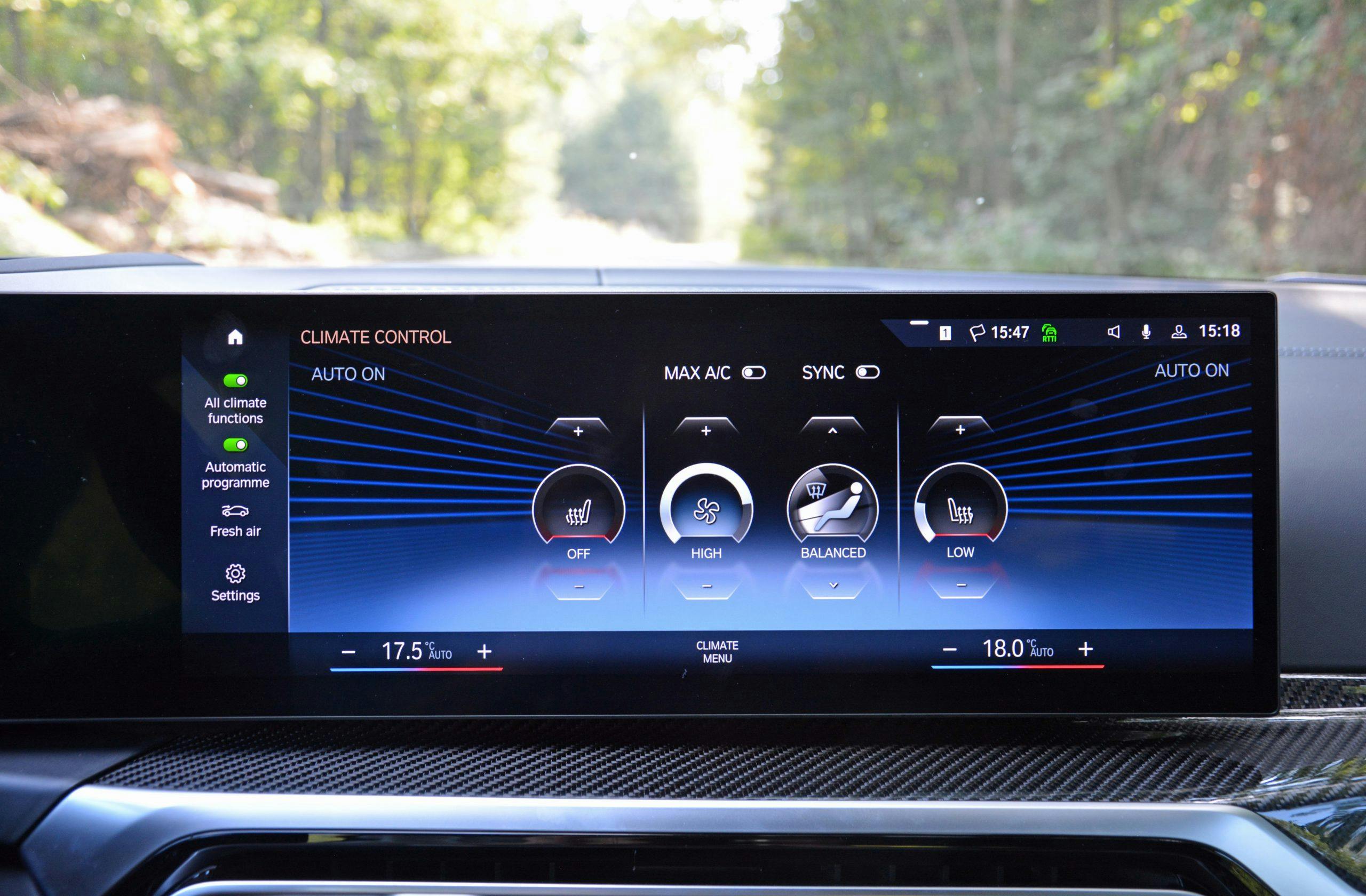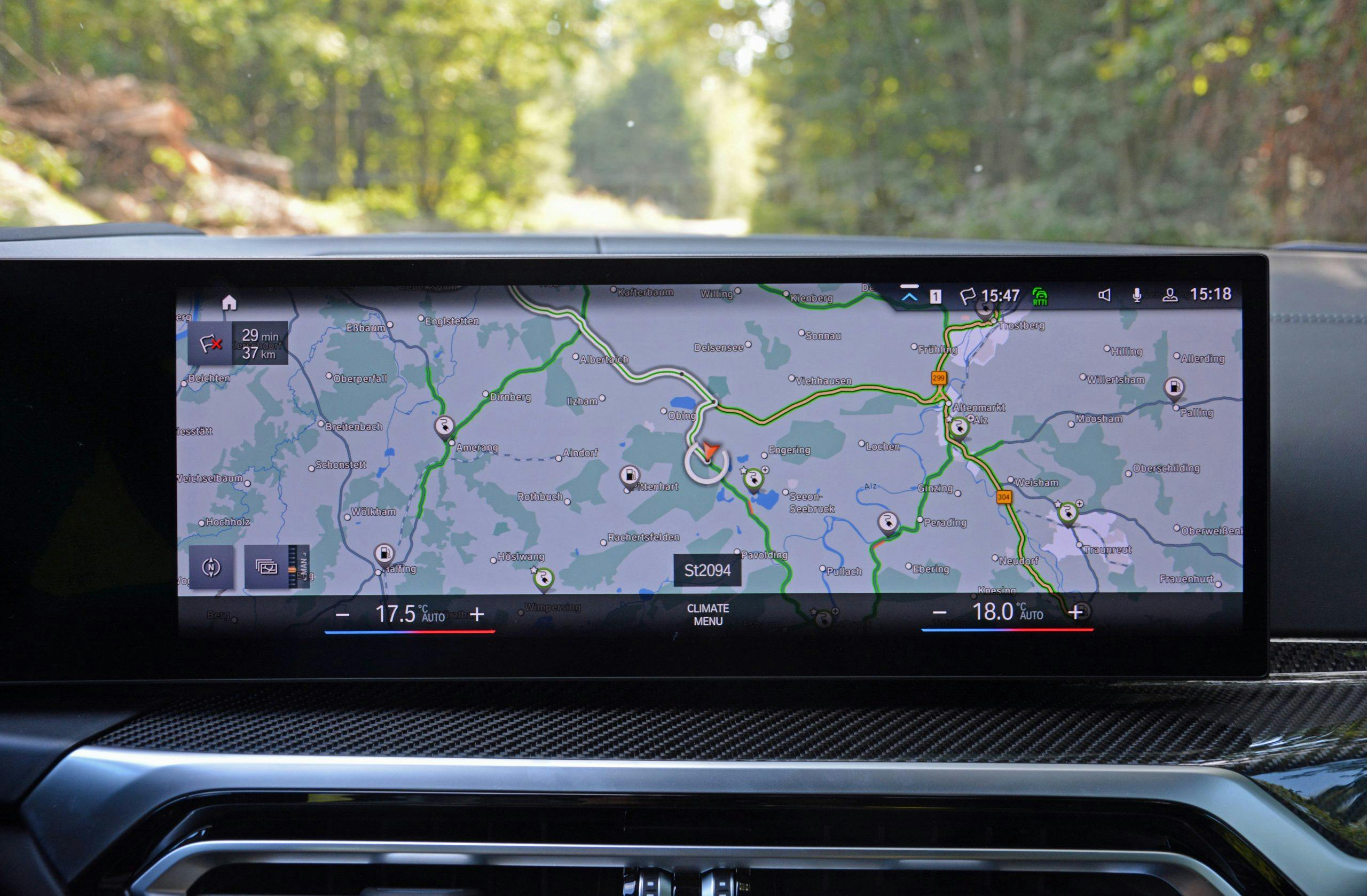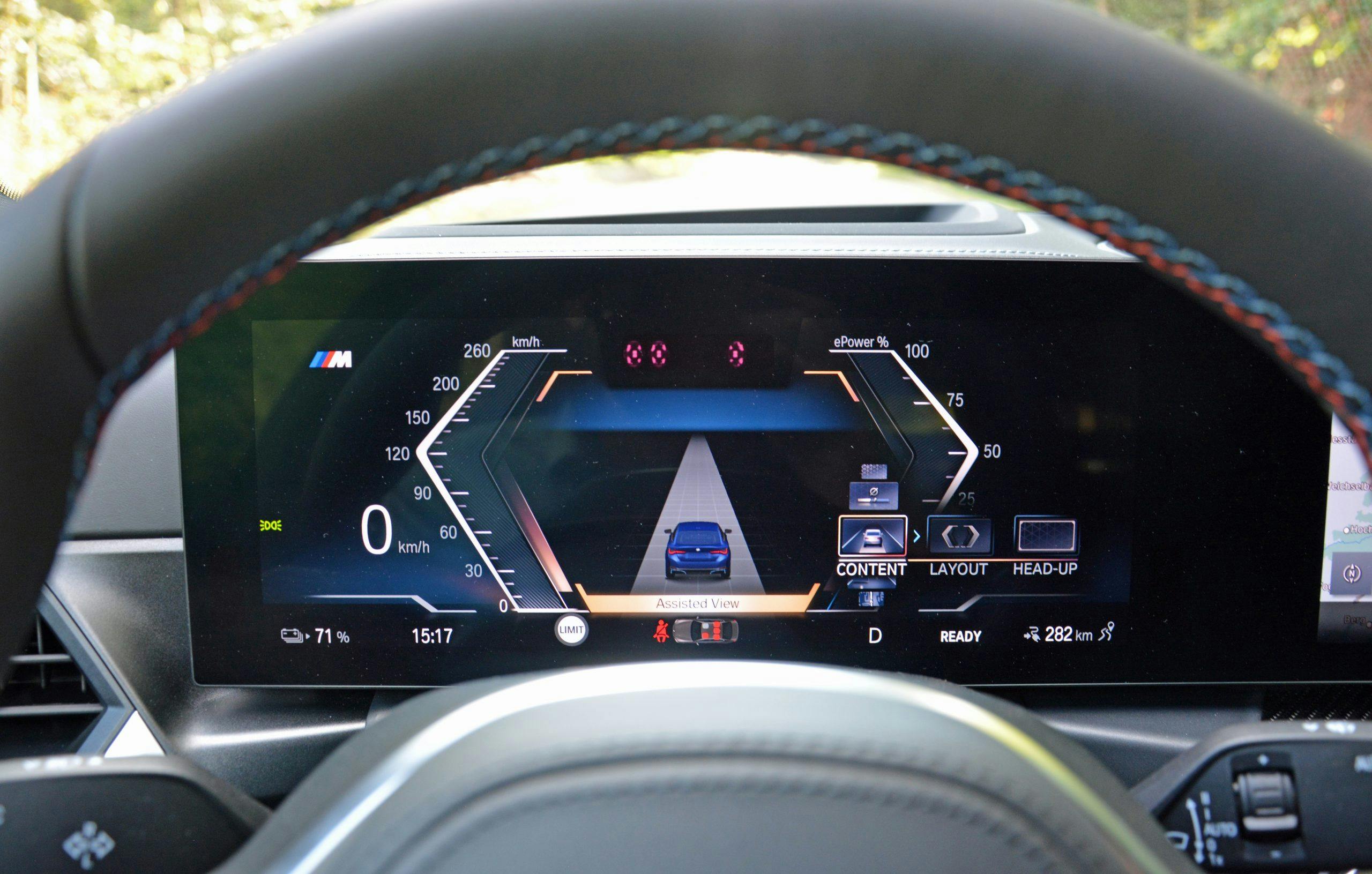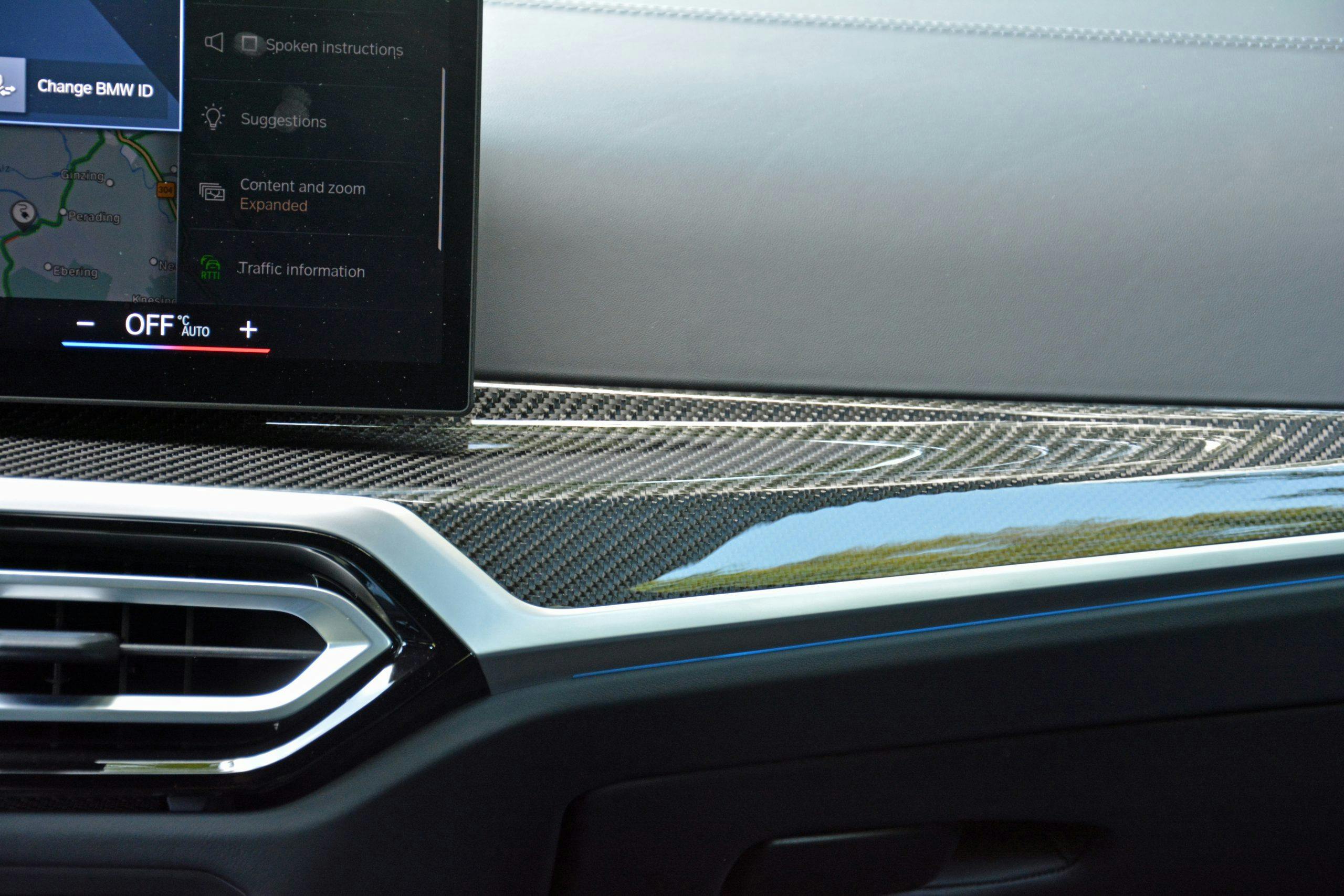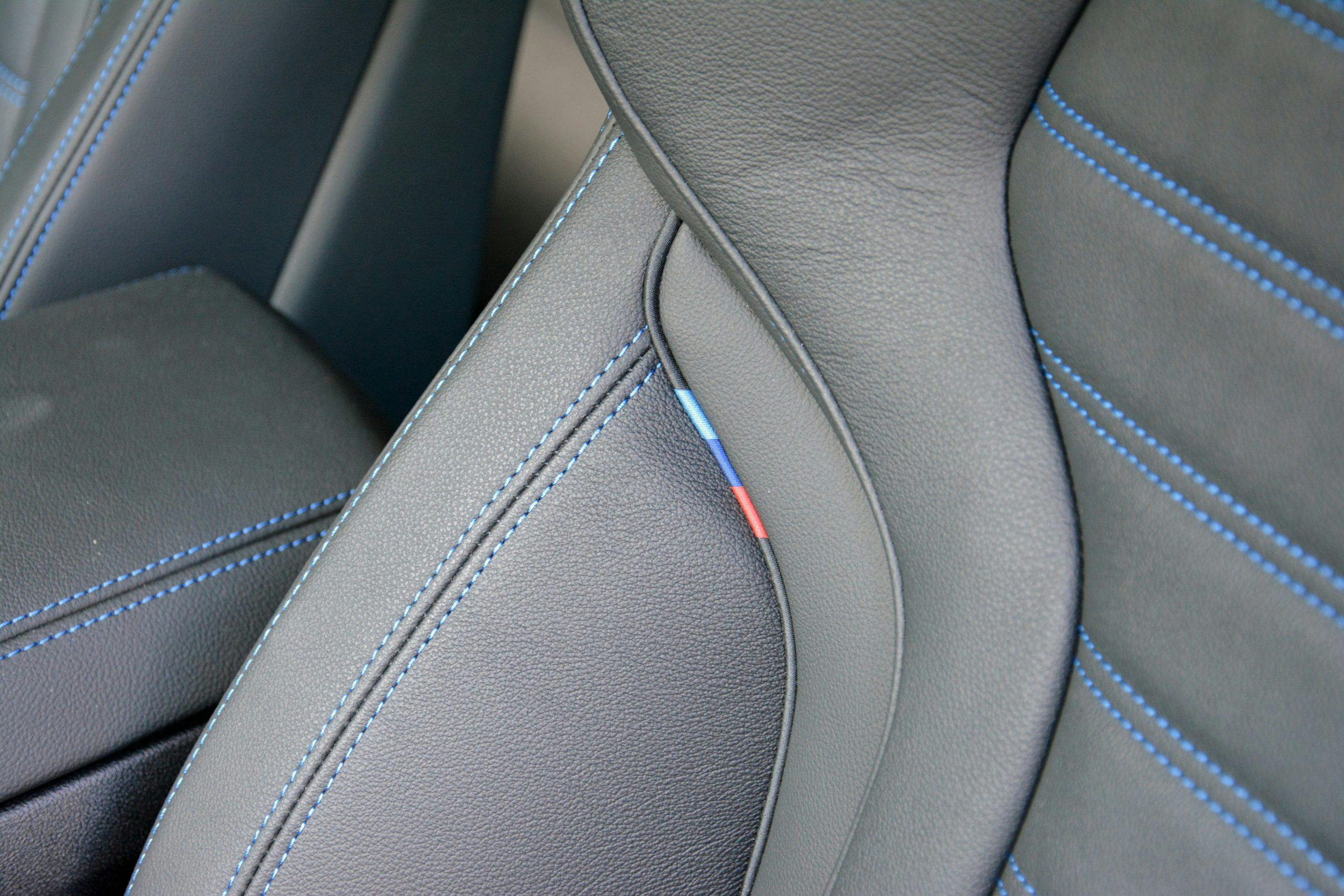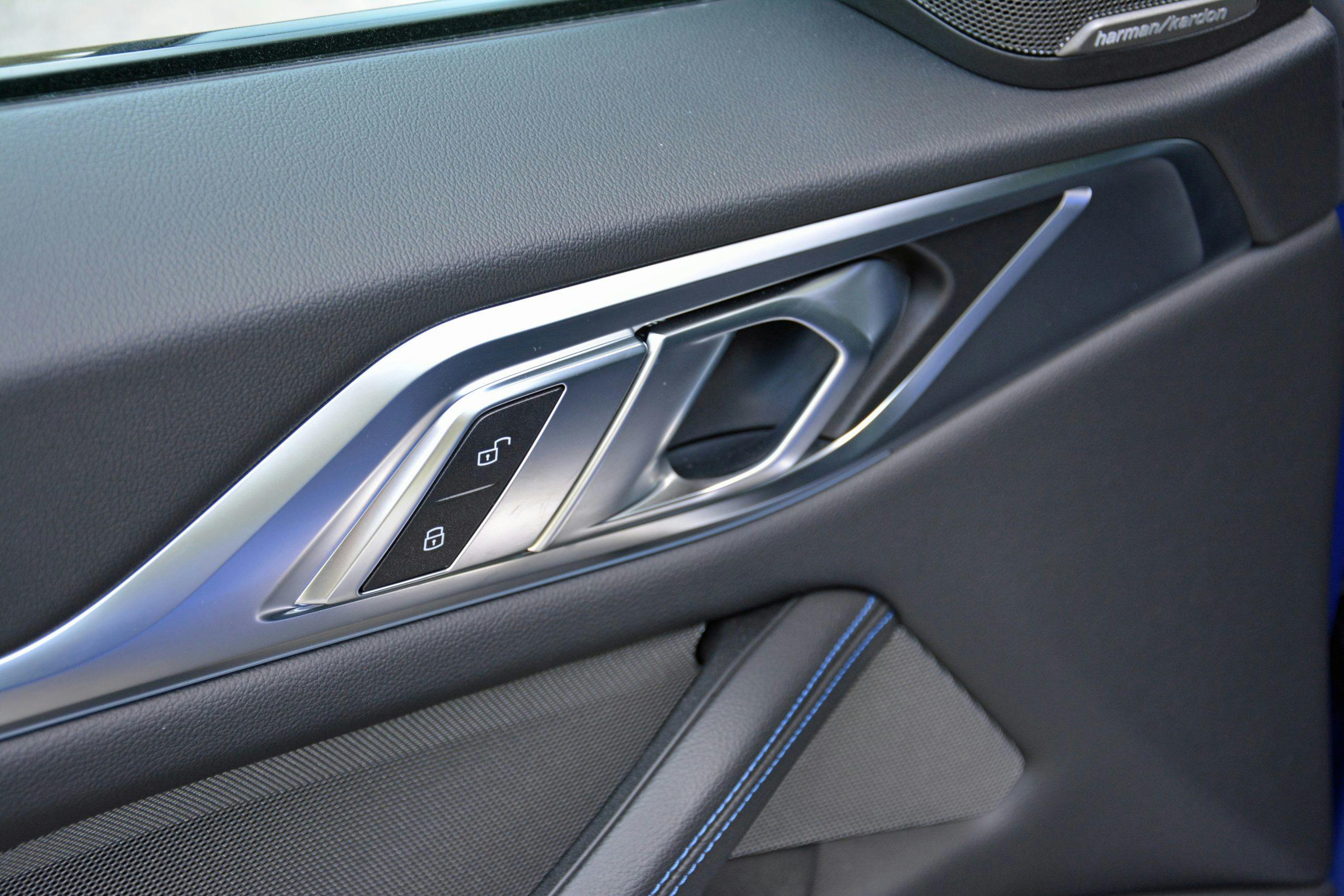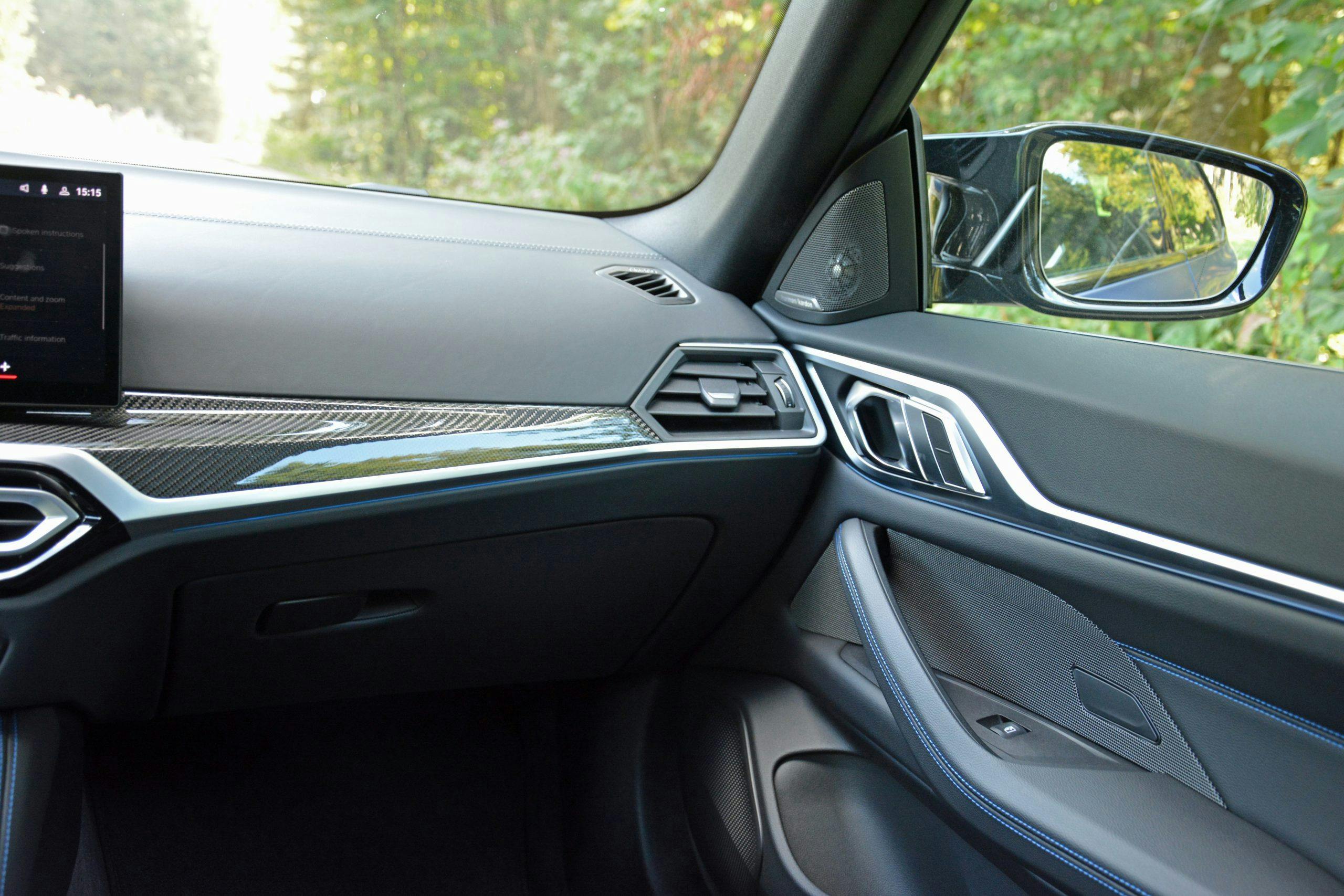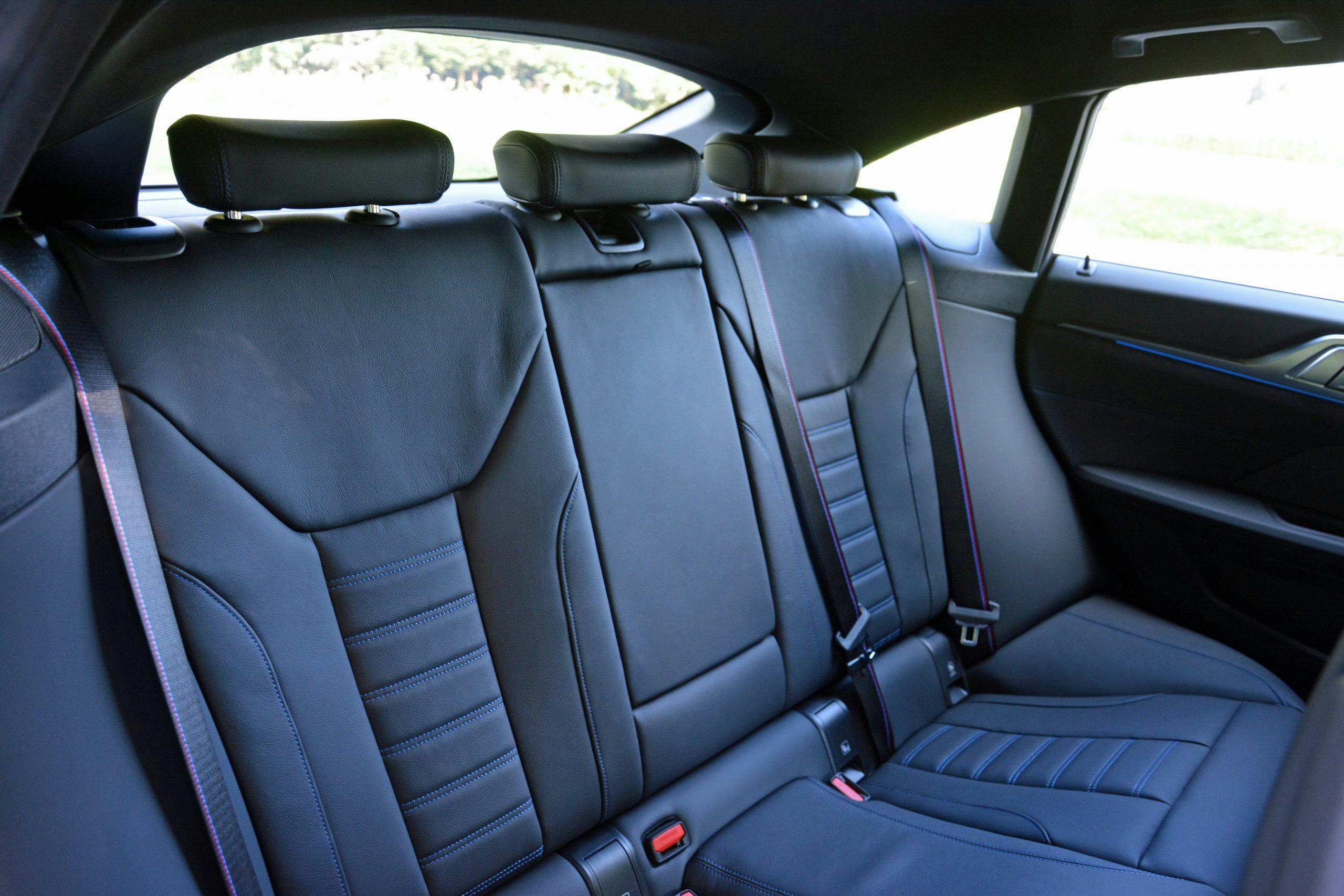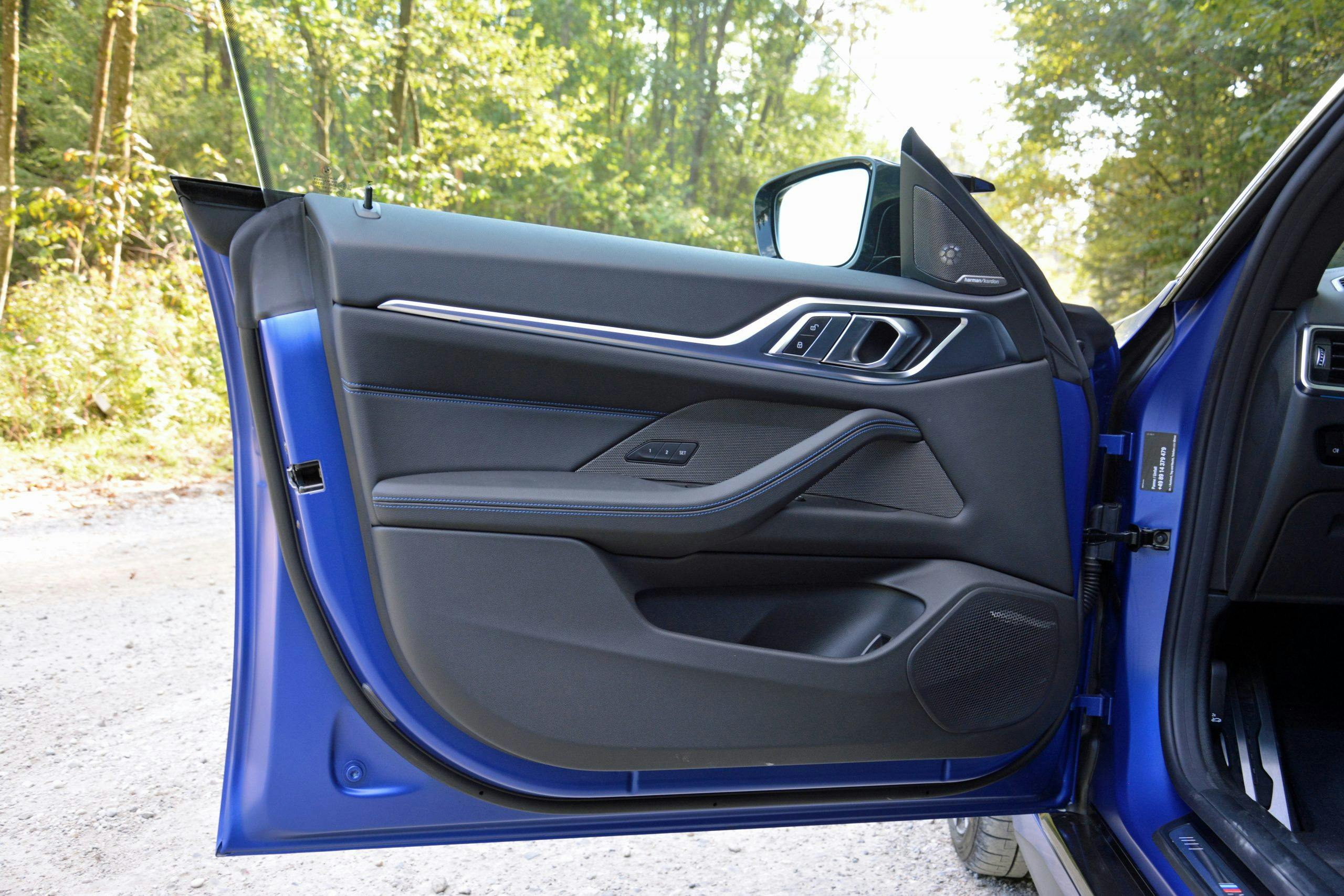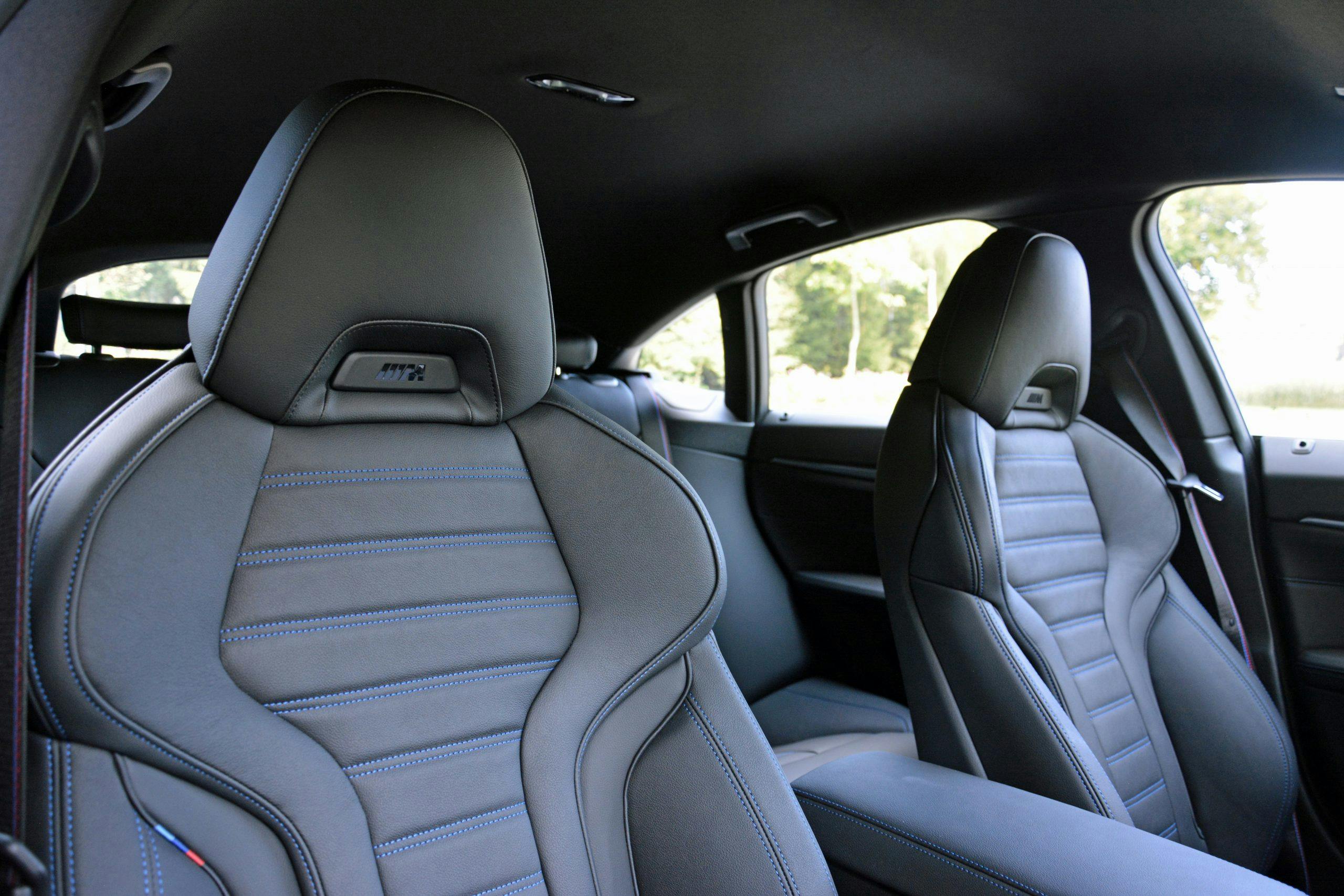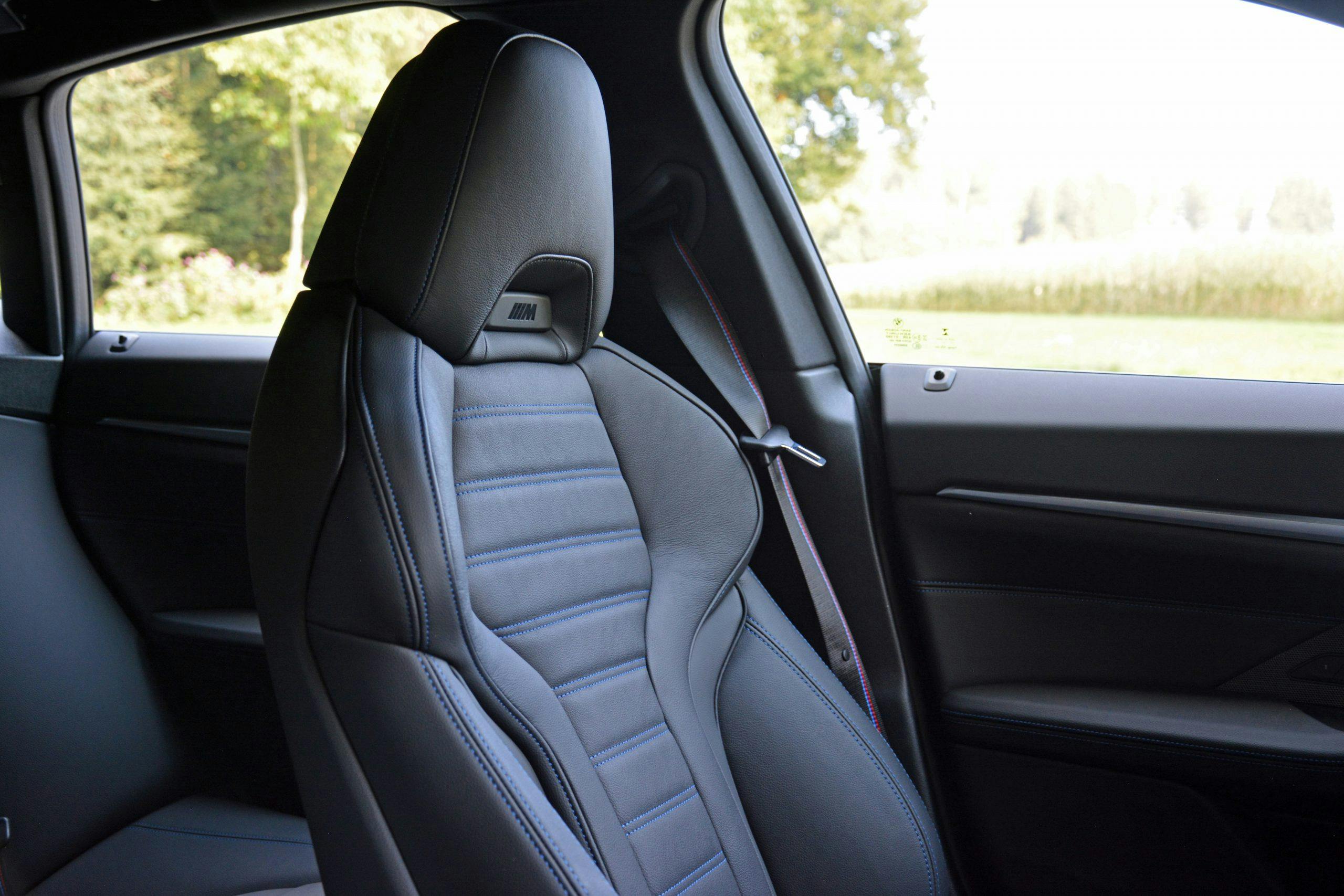First Look Review: 2022 BMW i4 M50
For decades, reviewing a BMW with an M badge on its trunk lid has required devoting a considerable number of characters to the engine. Maybe the next-generation straight-six, or an unexpected V-8. Not here; this is the i4 in M50 trim, and it’s powered by a pair of electric motors linked to a big battery. Strictly speaking, it has no engine.
Unveiled earlier in 2021, and previewed by a concept that was presented in 2020, the i4 is the fourth member of BMW’s eco-friendly i sub-brand and the first series-produced electric sedan from Munich. Get the “T” word out of your head: This is not a Tesla fighter, a Tesla killer, or a Tesla anything. It’s landing in a segment that has so far been largely ignored by carmakers (it’s about seven inches shorter than the Porsche Taycan, for example) and it plays a serious role in BMW’s electrification offensive.
The i4 is marketed as the BMW of the future. It’s supposed to look, drive, and feel like a true BMW without burning a drop of gasoline. What better roads to meet it on than the ones for which it was designed?

Up front, the grille creates an unmistakable family resemblance between the i4 and other recent BMWs, including the iX (which is also electric) and the second-generation 4 Series Gran Coupe. In fact, the i4 and the four-door 4 are nearly identical save for minute details that only eagle-eyed car-spotters would notice, like blue trim around the roundels, and the obvious lack of exhaust outlets. It’s clear that the design team wanted to create an electric BMW, not a fastback that looks like it belongs in outer space. With its muscular proportions, the i4 measures 188 inches long, 73 inches wide, and 57 inches tall.

About the grille: Yes, it’s controversial, but that’s the whole point. BMW wants to make a statement. Sales and feedback from the folks actually buying new BMWs (not the ones hoarding E34s in their backyard—you know who you are) suggest that the wide-mouth look is far more popular than many assume, and that’s a hugely important distinction. Carmakers are businesses, like your favorite local brewery. If you bought a growler in 2018 and haven’t set foot inside the place since, you’re less important to the firm’s bottom line than the guy who takes a seat at the bar every day after work, even if you love the glass container and proudly display it on a shelf in your living room. The same basic train of thought applies to BMW’s design language—and I say this as a car-hoarding purist.

Familiarity permeates the cabin as well. Sitting on a nicely-bolstered chair, the driver faces a three-spoke steering wheel, a 12.3-inch digital instrument cluster that’s part of a high-resolution curved display which also includes the iDrive 8 infotainment system’s 14.9-inch screen, and loads of carbon fiber. It feels … completely normal. Sure, it’s more tech-focused than the 3 Series (which doesn’t get the big screen yet), but not to the point that you’d be markedly out of your comfort zone after switching from one car to the other. The materials are excellent and the build quality is spot-on. Again, to BMW’s credit, the aim was to make an electric sedan that looks and feels like a real M car, and designers pulled it off.
The trunk is big enough for two large suitcases—and then some. And, if there’s no engine in the engine bay, there’s a frunk, right? EV aficionados tend to hail this front-trunk as one of electrification’s greatest side-effects, even as Porsche 914 owners look on puzzlingly. Ardent BEV fans may be disappointed here: Pop the hood, and you behold a sea of black plastic.

Power for the i4 M50 comes from a pair of electric motors linked to an 83.9-kilowatt-hour lithium-ion battery pack. There’s a motor over each axle, a configuration that’s fairly standard in the electric-car cosmos and that delivers all-wheel-drive without a mechanical connection between the front and the rear wheels. BMW quotes an output of 536 hp and 586 lb-ft of torque, figures that easily eclipse those of the current-generation M3, whose twin-turbocharged, 3.0-liter straight-six belts out 503 hp and 479 lb-ft, respectively, in Competition tune, or 473 and 406 in the standard model.
Numbers never tell the full story when it comes to performance cars, but if we want to play this game there’s a second parameter to consider: weight. Granted, an electric motor is more compact than a straight-six, but a battery pack is a lot heavier than a gas tank. BMW says the i4 tips the scale at 5018 pounds, while the M3 Competition weighs 3990. Put another way, the i4 is almost a full Citroën 2CV heavier. That’s partially why the M3 is three-tenths of a second quicker to 60 mph (3.4 vs. 3.7).

It would take a trip to the drag strip to feel the gap, however. In normal driving conditions, the i4 is lightning-quick off the line thanks to the instant torque provided by the electric motors, and it’s eager to exceed local speed limits, though luckily it has the presence of mind to warn you about it with audible and visual messages in the instrument cluster. Acceleration is linear, smooth, and silent unless you engage sport mode, which summons a deep, winding-like noise that oddly mimics an exhaust note.
Offsetting the electric powertrain’s weight required rethinking the i4’s chassis; it has less in common with the 3 Series than you might assume. Its front and rear tracks are slightly wider, its center of gravity is over an inch lower, and its front-back weight distribution checks in at 48.2 and 51.8 percent, respectively. BMW fitted an Adaptive M steel suspension system on the front axle and air springs out back, a solution which improves comfort, makes the i4 more stable, and keeps ride height in check.
The end result is a sport sedan that carries itself well on a twisty road and doesn’t feel as heavy as its specifications sheet suggests. There’s a good amount of weight in the variable steering system, too, though feedback is light. The i4 handles like a BMW ought to, with little in the way of body roll thanks in part to the battery pack being stuffed directly below the passenger compartment. The massive brakes reign in the powertrain with no fuss. Numerous companies claim to make sporty EVs; this is the real deal.
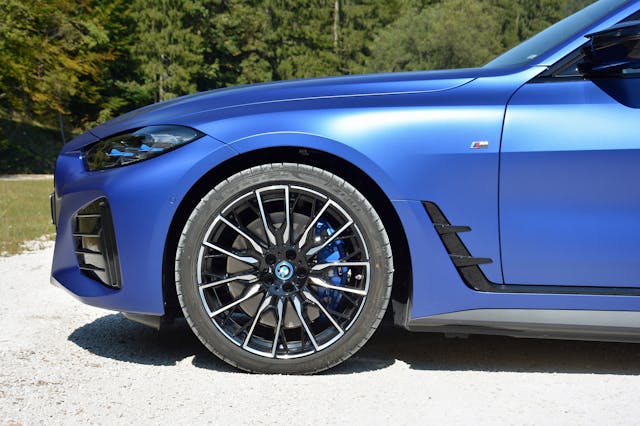
It’s also a different kind of deal. The i4 is not the sort of vehicle that encourages you to kick out the rear end or roast the tires. Grip is phenomenal, and the car always feels calm and collected. One of the more unusual aspects of the driving experience is that, because each motor is linked to a single-speed transmission, you can’t downshift. That’s the case in nearly every electric car available new in 2021, including the iX, but it’s a trait that often lurks under the radar given that most EVs are, ultimately, fancy commuters. No one buys a Nissan Leaf and heads straight to the Tail of the Dragon. The habit of downshifting before entering a long, sweeping turn is one that i4 drivers will need to lose. As somewhat of a trade-off, there’s a driving mode labeled “B” that engages a powerful brake energy recuperation system to enable one-pedal driving, so the car slows down (to a full stop, if needed) when you lift your foot off the accelerator pedal. The energy generated during this process gets channeled back to the battery pack.
Driving range—like fuel economy—heavily depends on a number of factors, including your driving style, the exterior temperature, and whether you’re coasting on a highway or lead-footing your way up a mountain pass. BMW estimates the i4 M50’s maximum driving range at 245 miles, though the EPA hasn’t put the model through its paces yet. I didn’t spend enough time behind the wheel to measure real-world range, but the estimate provided in the instrument cluster looked accurate. Charging times vary wildly based on the type of charger you use. If you charge at home, it’ll take over eight hours before “100 percent” shows up in the instrument cluster. If you’ve got access to a DC fast charger, BMW claims that you can zap the battery pack from 10 to 80 percent in 31 minutes. The i4 can handle 200-kilowatt fast charging.

When it lands in American showrooms, the i4 will be available in two flavors: eDrive40 and M50. I was not able to drive the former, which is an entry-level model fitted with a single electric motor that juices the rear wheels with 335 horsepower. Pricing starts at $55,400 for the 40 and goes up to $65,900 for the 50, though neither figure includes destination or available state and federal incentives. The list of options includes different paint and upholstery types, several driving aids, a wireless device charger, a Harman Kardon surround-sound system, and wheels ranging from 18 to 20 inches.
If you’re intent on cross-shopping, the i4 and the Polestar 2 are in the same ballpark in terms of cost, but they’re not engaged in tribal warfare. Shaped like an outgrowth of the Volvo family tree, the 2 blurs the line between a crossover and a sedan and is far less concerned with performance and handling. The Porsche Taycan and the Audi E-Tron GT cousins are both quick, sharp to drive, and electric, but they’re much bigger and correspondingly a lot more expensive. As of writing, then, the i4 has no direct rivals, an enviable position that will change in the coming years.
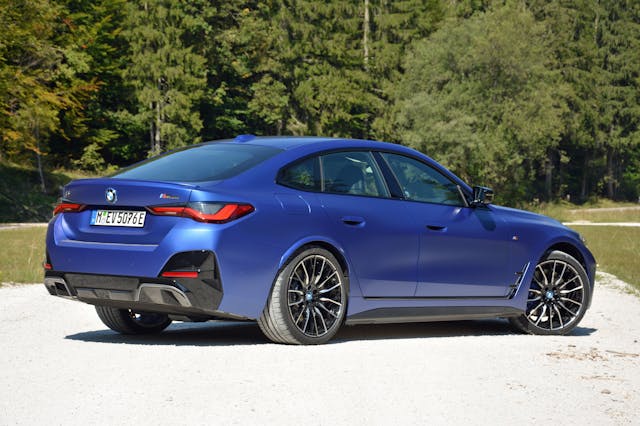
Inevitably, the i4 M50 will be compared to the mighty M3. They’re so close in many ways, yet so drastically different in others that the rivalry builds and fuels itself. Which one is better? You might as well argue the virtues of a pizza against those of a calzone. You can make excellent arguments for either side, but the answer ultimately depends on personal preference. If you think a sports sedan needs to have fewer local emissions than a Dairy Shorthorn, the i4 M50 is an excellent option. It’s quick, it’s engaging to drive, and it’s loaded with useful tech features. It’s a seriously desirable machine. On the contrary, if you think a sports sedan needs to be loud, raucous, and preferably powered by six or more pistons—which is perfectly OK, we’re still allowed to like engines!—then the M3 remains your best bet.
2022 BMW i4 M50
Price: $65,900 (excluding destination)
Highs: Quick, sharp handling, looks and feels like a proper BMW
Lows: Heavy, a little civilized for an M car, limited driving range
Summary: Surprisingly enjoyable to drive, the i4 M50 proves that electrification doesn’t erase the traits that enthusiasts love about BMWs.


